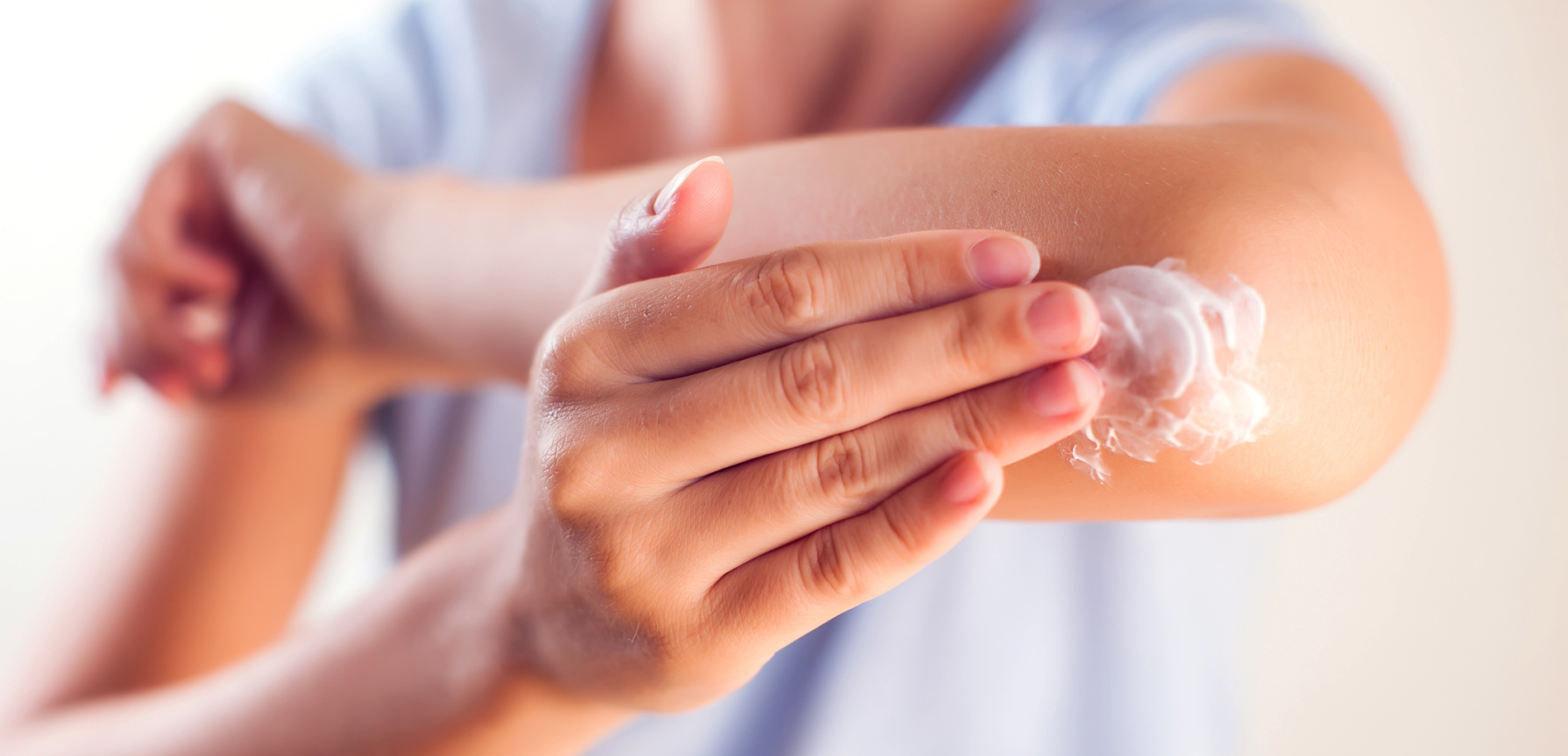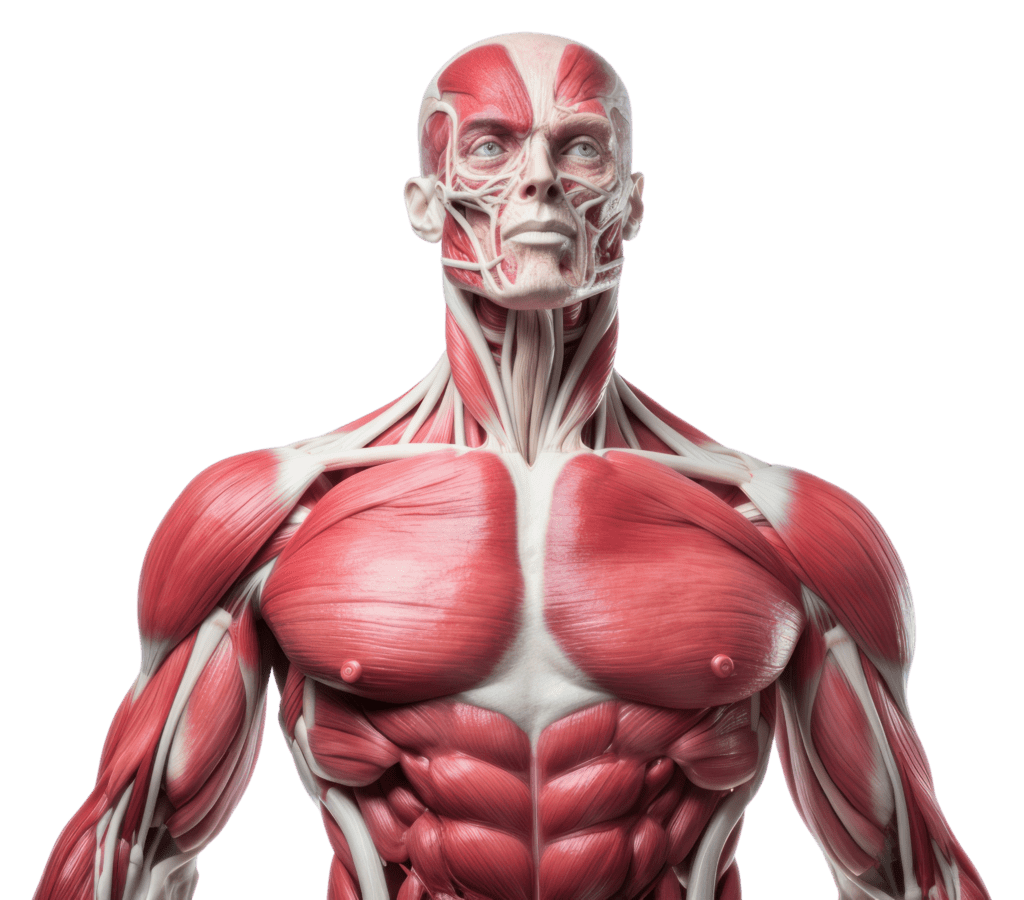
The Science Behind Pain Creams:
I experience pain, you experience pain, we all do. It’s a universal human sensation that’s as old as life itself. But what exactly is going on within our bodies when pain strikes? At its core, pain is the body’s alarm system, an essential signal that something isn’t quite right. How Pain Relief Creams Have Helped is a mystery we are here to explain.
Pain comes in various forms. There are two main types: acute pain and chronic pain. Acute pain is the sharp, immediate sensation you feel right after an injury. It’s your body’s way of saying, ‘Hey, watch out!’ Chronic pain, on the other hand, lingers. It can persist for weeks, months, or even beyond, continuing well after the initial injury has healed.
A cast of microscopic sensors in your body, called nociceptors, play the lead role in detecting pain. Found in your skin, joints, and organs, these nerve cells respond to stress signals like pressure, heat, or chemical changes and knock on your brain’s door to let it know there’s trouble.
How your brain processes these signals can affect how you FEEL the pain. Ever wonder why a stubbed toe can make you curse one day but seems like a minor nuisance the next? It’s all about context, including emotional and physical factors, and your brain’s interpretation of the signals it receives.
With this understanding of pain, the discussion naturally progresses to ways of managing it. Pain relief creams offer a targeted approach, promising a reprieve from this discomforting human experience. Let’s explore what pain relief creams are and how they aim to silence the alarms of our body’s intricate pain system.

An Overview of Pain Relief Creams: What Are They?
Pain relief creams are a staple in medicine cabinets around the world. They’re designed to provide temporary relief from aches and discomfort caused by a variety of conditions. But what exactly are these creams, and how do they stand apart from other pain management solutions?
Most pain relief creams come in the form of topical analgesics, which means they are applied directly to the skin over the problematic area. Unlike pills that need to be swallowed and work systemically, these creams typically offer localized relief. They are especially popular for joint and muscle pain because they can be applied specifically where it hurts.
The active ingredients in these creams vary, but they usually include compounds like nonsteroidal anti-inflammatory drugs (NSAIDs), capsaicin derived from chili peppers, or cooling agents like menthol. Some creams even blend these ingredients for a more complex approach to pain relief.
The main advantage of pain relief creams is their targeted approach. Because they’re applied where pain occurs, they can sometimes provide faster relief compared to oral medications. Plus, for people who have trouble swallowing pills or who want to avoid systemic effects, these creams can be an appealing option.
Users should note, however, that pain relief creams are generally intended for temporary relief and are not a cure for underlying conditions. It’s also crucial to follow the usage directions provided, as misuse can lead to skin irritation or other side effects.
With a variety of options on the shelf, from warming creams to those that provide a cooling sensation, you might wonder: how do you know which is right for your particular pain? That’s where a deeper dive into the science behind the ingredients and their actions can help illuminate the choices available.

Peeking into the Pain Relief Arsenal: Ingredients and Their Actions.
When you reach for a pain relief cream, you might not think much about what’s inside the tube, but the ingredients and their specific actions are crucial to its effectiveness. Popular pain relief creams often contain nonsteroidal anti-inflammatory drugs (NSAIDs) like ibuprofen or diclofenac. These work by reducing the production of prostaglandins, chemicals that promote inflammation, pain, and fever.
Another common ingredient is capsaicin, derived from chili peppers, which reduces the intensity of pain signals sent to the brain. Over time, regular application of capsaicin can decrease pain sensations. Menthol, also widely used, creates a cooling sensation that can temporarily override your ability to feel pain, acting as a counterirritant.
Counterintuitive as it may seem, sometimes the goal with pain relief creams is not to eliminate pain entirely, but to manage it in a way that allows for normal function and healing. For instance, salicylates, chemically similar to aspirin, work by decreasing inflammation and pain at the site of application. Meanwhile, lidocaine, an anesthetic, numbs the skin, lessening the pain by blocking nerve signals.
Each ingredient has a specific job, and the science behind how they relieve pain is quite fascinating. The method by which these ingredients target pain is twofold: some reduce the underlying inflammation causing the pain, while others interfere with the pain signals themselves, preventing them from reaching the brain in full force.
The conversation about effectiveness would be incomplete without mentioning the absorption methods. That’s the perfect bridge to understanding the next piece of the puzzle – how pain relief creams work, specifically regarding application and absorption. This will form the basis of our following section, where we delve into the science of transdermal delivery and its importance in pain management.

Application and Absorption: How Pain Relief Creams Work.
Have you ever wondered what happens after you rub a cream onto your skin? The key is transdermal absorption, which quite literally means ‘across the skin’. This is the process that allows the active ingredients in pain relief creams to move from the surface of your skin into deeper tissues.
Think of it this way: your skin is like a wall that protects your body from external elements, but this wall has gateways that allow certain substances to pass through. When you apply a cream, the ingredients travel through these gateways, reaching the affected area to provide targeted pain relief.
However, not every ingredient gets through with the same efficiency. Factors such as molecule size, skin condition, and even the presence of enhancers that promote absorption can influence how well a pain relief cream works for you.
That’s why proper application matters. It’s not just about putting a dollop of cream onto your skin; it’s about how you massage it in. Improving blood circulation to the area and following directions for use increase the likelihood of the ingredients penetrating to where they’re needed most.
The ultimate goal is for these ingredients to alleviate pain without having to travel through your digestive system, as they would with oral medications. This advantage minimizes potential systemic side effects, which is a significant benefit for people seeking localized pain control.
When considering the switch from tablets to creams, having a grasp on this science empowers you to make informed choices. But, how can you be sure that what you are applying will work? In the next section, ‘Evaluating Efficacy: Research Backing Pain Relief Creams’, I’ll guide you through the research that validates the effectiveness of these topical treatments. Stay tuned to learn if science supports what many pain sufferers hope to be true.

Evaluating Efficacy: Research Backing Pain Relief Creams.
I know you’re curious about whether pain relief creams are truly effective. After all, it’s important to have evidence behind the products we use for health and wellness. Let’s look at what science has to say.
Researchers have been exploring the effectiveness of pain relief creams for a variety of conditions, from muscular aches to joint pain. Clinical studies often focus on ingredients like NSAIDs or capsaicin to measure their impact on pain levels.
For instance, some studies show that creams containing NSAIDs can reduce pain and improve function in individuals with conditions like arthritis. Capsaicin creams are also noted for decreasing the intensity of pain signals over time, particularly for neuropathic pain.
However, not all creams are created equal. The concentration of active ingredients, the formulation, and even the baseline pain level of participants can influence the outcomes of these studies.
But it’s not just the physical symptoms that are evaluated. Research also considers the psychological aspect of pain relief, exploring how the use of creams may contribute to a person’s overall sense of well-being.
Despite promising results, there are limitations to consider. Some studies have small sample sizes or may lack long-term follow-up, which makes it challenging to determine the lasting effects of pain relief creams.
Acknowledging these limitations paves the way for further research. The quest for definitive answers continues as scientists work to design better studies and explore new formulations.
Determining the real-life impact of these findings can be challenging, but personal experiences (which we’ll explore in the next section) often echo the positive outcomes noted in clinical research.
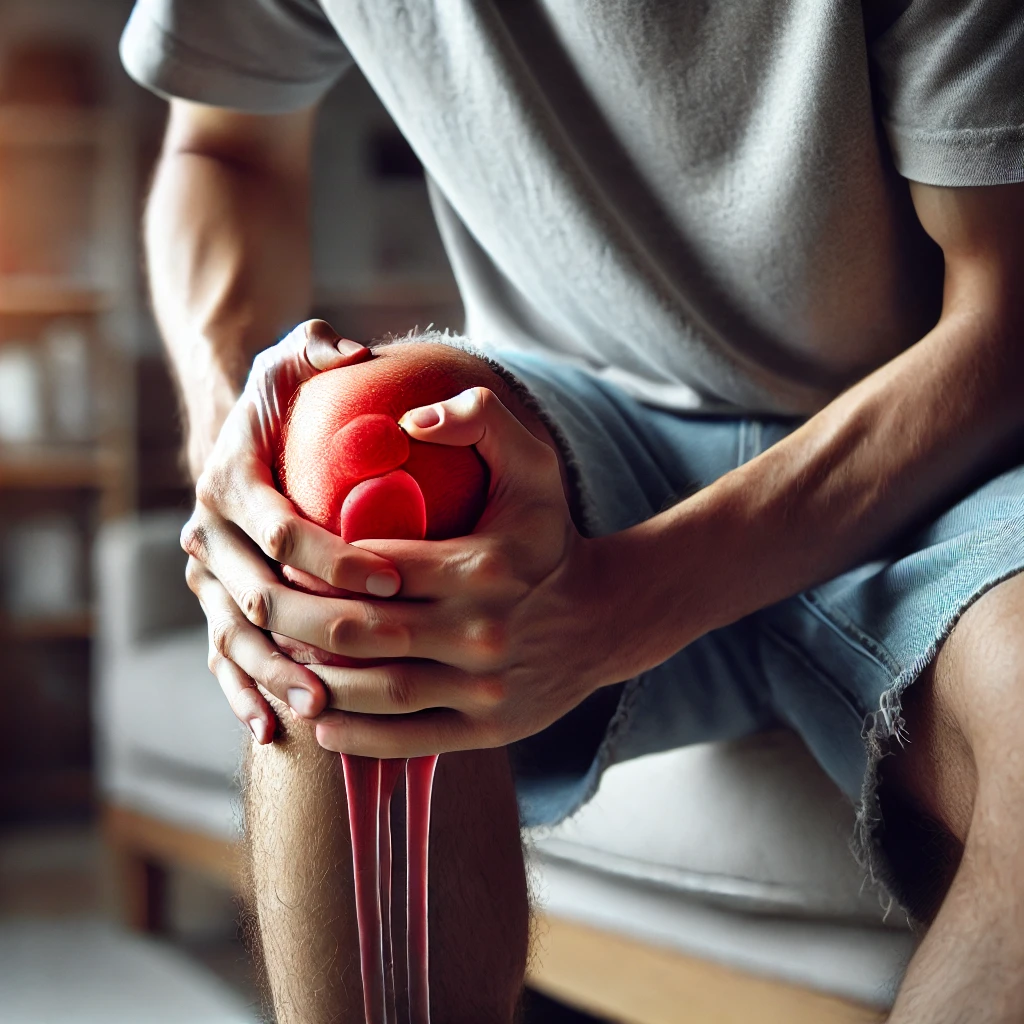
Safety Profile: Side Effects and Contraindications.
I know it’s tempting to grab a pain relief cream and expect a no-strings-attached solution to discomfort. But, like any treatment, there’s a safety profile to consider. Let me walk you through what you need to know about the potential side effects and who might think twice before using these creams.
While generally safe for many, pain relief creams can cause reactions. For example, skin irritation or allergic responses are possible, particularly if you’re sensitive to an ingredient. Always do a patch test before going all in with a new product.
More severe side effects, although rare, include blisters, increased pain, or breathing difficulties if you’re allergic. I must urge you, if you ever notice symptoms like these after using a cream, SEEK IMMEDIATE MEDical attention. It’s better to be cautious.
There are also specific groups that should steer clear of certain creams. If you’re pregnant or nursing, always talk to your doctor first. And if you have broken skin or an infection at your intended application site, HOLD OFF on the cream until you discuss it with a healthcare provider.
And remember, some creams may interact with other medications. Anticoagulants and certain antiplatelet drugs are a classic example where added caution is recommended. This is why it’s ESSENTIAL to talk to a pharmacist or doctor about what you’re using—especially if it’s for the first time.

Personal Stories: How Pain Relief Creams Have Helped?
I’ve encountered many individuals who have turned to pain relief creams for comfort. Often, they share their stories of how these creams have helped manage aches that once felt untamable. A gentleman with arthritis in his hands told me that a particular cream enabled him to start painting again, something he thought he had lost forever.
Another person, a runner with persistent knee pain, found that applying a cream with anti-inflammatory properties before and after her runs made a significant difference. For her, it was all about maintaining the lifestyle she loved, and the cream was a tool that helped her do just that.
It’s important to acknowledge that pain is a unique and personal experience. What works for one person may not work for another. Consistent use, as advised by a healthcare professional, seems to be a common thread among the success stories.
These anecdotes provide valuable perspectives, but remember, they are individual experiences. They serve as a reminder that pain relief is not one-size-fits-all, and what brings relief to one may not for another. Therefore, it becomes crucial to consider personal stories as a part of the larger puzzle when understanding pain relief methods.

Integrating Creams into a Holistic Pain Management Plan.
I find it essential to emphasize that pain relief creams should not be seen as a standalone solution. Tackling pain effectively often requires a multifaceted approach — combining topical treatments with other modalities.
I recognize the value in blending pain relief creams with other treatment methods. For instance, physical therapy exercises can enhance mobility and decrease discomfort, while the cream provides localized relief. The addition of heat or cold therapy might further assist in reducing swelling and pain.
Lifestyle adjustments serve as the cornerstone of a well-rounded pain management strategy. These may include dietary changes, stress reduction techniques, and appropriate sleep hygiene practices, all of which can influence the body’s pain response.
Crafting a tailored pain management plan should involve conversations with healthcare professionals. They can offer guidance based on individual needs, considering the nature and severity of one’s pain, as well as any underlying health conditions.
Incorporating pain relief creams into this comprehensive approach can contribute to better pain control and possibly reduce the reliance on oral pain medications, which might come with a higher risk of systemic side effects.

Making an Informed Decision: Choosing the Right Pain Relief Cream.
Understanding pain is more than just feeling it—it’s about knowing how to manage it properly. There are many different creams out there, and each one works a bit differently. Finding the right one for you can make a big difference in how you feel. It’s not just a guessing game; you need to choose wisely.
When choosing a pain relief cream, think about the type of pain you have. Is it from sore muscles after exercising, or is it more constant, like from arthritis? Each type of pain might need a different kind of cream. Some creams are made to cool down the pain, while others might warm it up or help with swelling. Picking the right one is important.
Before buying a pain relief cream, look at what’s inside. The ingredients are key to how the cream works. Some have things that help with inflammation, while others might have menthol to create a cooling effect. Understanding the ingredients can help you choose the best cream for your pain.
Match Your Pain To The Cream!
It’s crucial to match the cream to your specific type of pain. Not all pains are the same, and not all creams will work for every type. Muscle stiffness after a workout might need a different cream than chronic joint pain. Using the right kind can provide better relief and make you feel more comfortable.
Ingredients in pain relief creams play a big role in how they work. If you have muscle soreness, a cream with menthol might help because it cools the area and numbs the pain. For joint pain, creams with anti-inflammatory ingredients might be more effective. Always check the ingredients to see if they match your needs.
Don’t be swayed just by the advertising on the package. Marketing can sometimes make a cream sound perfect, but what’s inside is what counts. Read the label to see what’s really in the cream and how it works. This way, you can make a smart choice and find a cream that truly helps.
Listen To the Signs!
One cream doesn’t work for everyone. What works well for one person might not work at all for another. Your body is unique, and how it reacts to a cream can be different from how someone else’s body reacts. It’s all about finding what works best for you.
Your skin might react differently to different creams. Some people have sensitive skin and need a gentle cream, while others can handle stronger ingredients. The location of your pain also matters—what works on a sore shoulder might not be right for a painful knee. It’s personal and requires some trial and error.
Always talk to your doctor about which pain relief cream to use. They can help you understand what type of cream might work best for your specific pain. They know your health history and can offer advice based on your needs. Finding the right cream can make a big difference in managing your pain effectively.
Remember, pain relief is more than just temporary comfort. By choosing the right cream, you can take an ACTIVE role in managing your pain and improving your quality of life. Keep informed about new research and product developments, because the world of pain relief is always evolving, much like our understanding of pain itself.
Our YouTube channel Gym Rat Tips!
Check Out Our I Fund women Campaign!
Check out Our Social Media Accounts!
[Disclaimer: Consult a healthcare professional before starting any new pain soothing regimen. “No Youchie” is not intended to diagnose, treat, cure, or prevent any disease illness or injury.]
Pain Relief Solution Is No Youchie!

How To Choose The Right Pain Relief Cream For Your Needs
If you’re curious about how these creams can ease your aches, you’re in the right place. We’ll be diving into the various types of pain that can be soothed by these topical saviors, from muscle strains to arthritic aches.
Now, I’m here to help you become savvy about pain relief creams. This isn’t just about slapping on any ointment and hoping for the best; it’s also about understanding what’s in these creams and how they target pain. So, let’s set the stage for making an informed choice that brings you the relief you’re seeking.
Understanding the Basics of Pain
Types of Pain: Acute vs. Chronic
Pain comes in two main types: acute and chronic. 🤕 Acute pain is like the sharp pain you feel when you stub your toe or get a paper cut. It comes on quickly and usually goes away after a short while. It’s your body’s way of telling you that something is wrong.
Chronic pain is different because it sticks around for a long time, sometimes even when the injury that caused it has healed. This kind of pain can last for months or even longer. It’s like having an annoying song stuck in your head, but it’s pain, and it doesn’t stop easily. 🎶
Understanding whether your pain is acute or chronic helps in choosing the right way to treat it. Acute pain can often be treated with simple things like ice, rest, or over-the-counter pain relief creams. Chronic pain might need more help, like from doctors or special medicines. 🏥
Common Causes of Pain
Pain can be caused by lots of different things. Sometimes it’s clear why it hurts, like if you fall and scrape your knee. Other times, pain might come from something inside your body that isn’t working right, like a stomachache when you eat something bad. 🍔
Common causes of pain include injuries (like cuts or broken bones), illnesses (like the flu or an ear infection), and chronic conditions (like arthritis or back problems). Each cause might need a different type of treatment, so it’s important to know what’s causing the pain. 🔍
Sometimes, you might feel pain even if there’s no obvious injury or illness. This can be confusing, but it’s just another way your body talks to you. It’s always a good idea to listen and get help from a grown-up or doctor if you’re not sure why something hurts. 🧐
The Body’s Pain Response Mechanism
When something hurts you, your body has a clever system to tell you about it. This is called the pain response mechanism. Imagine your body has a bunch of tiny alarm bells that go off when they sense something wrong. 🚨
When you get hurt, these alarm bells send signals up through your nerves to your brain, telling it, “Hey, something’s wrong here!” Your brain then makes you feel pain, which is its way of asking you to take care of the hurt part. 🧠
This system is really important because it helps you avoid more harm. For example, if you touch something hot, the pain makes you pull back your hand quickly. Without the pain telling you to move your hand, you could get a bad burn. Pain, although unpleasant, is actually your body trying to protect you! 🛡️
Identifying the Type of Pain
Characteristics of Acute Pain
Acute pain is like the body’s alarm system going off to tell you that something is wrong. 🚨 It starts suddenly and is usually sharp and clear. Imagine getting a splinter in your finger or bumping your head on the door. It hurts a lot at first, right? That’s acute pain. It’s your body’s way of saying, “Hey, watch out and take care of this!”
This type of pain is usually linked to something specific like an injury or surgery and it goes away once the injury heals. It might last for a few moments or linger for a few days or weeks. For instance, the pain from a stubbed toe will decrease as the bruise heals. 🤕
Acute pain is important because it helps you react to prevent further injury. It makes you pull your hand back from a hot stove or makes you rest an injured leg. Without acute pain, you might not know something is wrong and could hurt yourself even more. 😯
Symptoms of Chronic Pain
Chronic pain is different because it sticks around for a long time, often longer than three months, and sometimes even after the injury that caused it has healed. This kind of pain can feel like a constant ache or a dull pain that just won’t go away. It can happen in any part of your body and might come and go or be present all the time. 🕰️
People with chronic pain might feel tired a lot, have trouble sleeping, or feel a bit grumpy or sad. This is because it’s really draining to be in pain a lot. Imagine how tired you feel after a long day of playing and running around, except you feel tired because you’re in pain. 😓
Managing chronic pain can be tricky and often involves different types of treatments like medication, physical therapy, and sometimes even changes in diet or lifestyle. It’s not just about treating the pain but also about helping the whole person feel better and live a fuller life. 🌱
Pain Categorization: Nociceptive vs. Neuropathic
Pain can also be categorized by what causes it: nociceptive or neuropathic. Nociceptive pain happens when special nerve endings—called nociceptors—get hurt or could be hurt. This is the pain you feel when you cut your finger or twist your ankle. It’s caused by damage to body tissues and it’s the most common type of pain. 🤺
Neuropathic pain, on the other hand, is a bit trickier. It’s caused by damage to the nervous system itself, which can make the body send pain signals even if there isn’t any actual injury. Imagine your body’s wiring system getting mixed up and sending false alarms to your brain that something hurts. 🔌
Knowing whether pain is nociceptive or neuropathic helps doctors decide the best way to treat it. Nociceptive pain might be managed with things like ice, heat, or over-the-counter pain relievers, while neuropathic pain might need special medicines that calm the nerves down. Each type needs different care, so understanding the difference is super important! 📖
Locating the Source of Pain
Mapping Pain Locations
When you feel pain, it’s like your body is drawing a map to show where something is wrong. 🗺️ Mapping pain locations means figuring out exactly where the pain is, how it feels, and what might be causing it. This is like being a detective, looking for clues to solve a mystery. For instance, if your knee hurts when you run, the map is pointing to your knee as the area to check out.
Doctors often ask you to describe your pain—is it sharp, dull, throbbing, or burning? They also want to know if it stays in one spot or spreads out. This helps them make a clearer picture or map of your pain. The better the map, the easier it is to find out what’s wrong and how to treat it. 📍
Mapping can also involve marking the painful areas on drawings of the body during a doctor’s visit. This visual helps both you and your healthcare provider understand the pain better and track any changes over time, whether it’s getting better or worse. 📉
Tools for Pain Assessment
To help figure out pain, doctors use special tools called pain assessment tools. 🛠️ These can be simple questionnaires where you mark how much pain you feel on a scale from 1 to 10, or more detailed forms where you describe the pain’s nature and what triggers it. These tools help in capturing your pain in words and numbers that doctors can easily understand and measure.
Some tools are even designed for specific types of pain or for certain groups of people, like children or those who can’t communicate well. For example, there are charts with faces showing different pain levels from no pain (a happy face) to worst pain (a crying face), which help even young kids express how they feel. 😊😢
Using these tools, doctors can get a good idea of how severe your pain is, which helps them decide the best treatment. It’s a way of turning your “ouch” into information that can be used to help you feel better. 🔍
Importance of Identifying Pain Hotspots
Knowing exactly where your pain is most intense, or identifying pain hotspots, is really important. 🎯 This information can tell doctors a lot about what might be causing your pain. For instance, pain in your lower right abdomen could suggest appendicitis, while pain in your chest could be something different like heartburn or even heart problems.
Identifying these hotspots helps in choosing the right tests and treatments. It’s like knowing where to dig to find buried treasure; without a good map showing where X marks the spot, you might miss it entirely. 🔍🏴☠️
Plus, understanding pain hotspots can also help in managing chronic pain. When you know the areas that trigger the most pain, you can work on specific strategies to ease discomfort in those areas, like targeted exercises, specialized therapies, or localized treatments. 🎽
Overall, finding out where your pain is coming from and understanding its characteristics is a big step toward getting the right help and starting to feel better. This makes it crucial for both acute and chronic pain management, ensuring you receive the most effective care tailored just for you. 🌟

Measuring Pain Intensity
Pain Scales and How to Use Them
Pain scales are tools that help you describe how much pain you’re feeling in a way that others can understand. 📏 One common type is the numerical scale from 0 to 10, where 0 means no pain at all and 10 means the worst pain you can imagine. This helps doctors understand how bad your pain is, just like measuring how tall you are with a ruler.
When you use a pain scale, think about how the pain is affecting your day. If the pain makes it hard to play or eat, it might be high on the scale. If it’s just a little annoying but you can still do your favorite activities, it might be lower. 🤔 It’s like giving your pain a score to help your doctor figure out how to make you feel better.
Using a pain scale is also a good way to check if your medicine is working. If your pain number goes down after taking medicine, that’s a good sign that it’s helping. If the number stays the same or goes up, you might need to tell your doctor. 📉
Self-Assessment Techniques
Self-assessment techniques are ways you can check your own pain even when you’re not at the doctor’s office. It’s like being a detective for your own body. You can start by noticing what makes your pain better or worse, like sitting down or walking around. 🕵️♂️
You can also keep a pain diary, which is a notebook where you write down when you feel pain, what it feels like, and anything you did that might have caused it. This can help you see patterns and figure out what triggers your pain. 📓 It’s like putting together pieces of a puzzle to understand your body better.
Another technique is to use your own words to describe the pain. Is it sharp like a knife or dull like an ache? Does it throb like a drumbeat or sting like a bee? Describing your pain with as many details as possible helps your doctor understand what you’re going through. 🐝
When to Seek Professional Help
Knowing when to seek professional help for pain is very important. If you ever have pain that doesn’t go away or gets worse over time, it’s a good idea to see a doctor. This is especially true if the pain keeps you from sleeping, eating, or doing your daily activities. 🚑
If your pain comes with other worrying signs like fever, trouble breathing, or feeling very tired, you should tell an adult and get medical help right away. These could be signs that something more serious is going on. 🚨
Remember, it’s always okay to ask for help if you’re in pain. You don’t have to tough it out. Doctors and nurses are there to help you feel better, and getting their advice can make a big difference in how you feel. 🏥 Just like you’d ask for help with a tough homework question, asking for help with pain is smart!
Temporal Patterns of Pain
Understanding Pain Timelines
Pain timelines help us understand how pain changes over time. 🕒 Think of it like tracking the path of a storm: knowing when it starts, how intense it gets, and when it fades away. Some pain might be short, like a quick headache that goes away after an hour. Other pain might last longer, like a sore back that bothers you all week.
By noticing how long your pain lasts, you can tell a lot about what might be causing it. For example, pain from a minor injury like a scraped knee usually doesn’t last very long. But if the pain sticks around for a long time, it might be something more serious, like a deep cut or an infection. 🤕
It’s also useful to track when during the day your pain feels better or worse. Some people might find their pain is worse in the morning or after sitting down for too long. Knowing this can help you plan your day better and manage your pain more effectively. 📅
Impact of Pain on Daily Activities
Pain can really affect how you do your daily activities. Imagine trying to write a story but you have a painful splinter in your finger—it would make writing really hard! 🖊️ Similarly, if you have a sore foot, it might make walking or playing sports tough. This shows how pain can stop you from doing the things you enjoy or need to do each day.
When pain starts to interfere with your daily life, it’s important to take note of what activities are getting harder to do. This information is very helpful for doctors because it gives them a clearer picture of how your pain is impacting you. 📝
If you find that pain is making it hard to sleep, eat, study, or play, it’s a sign that you might need some extra help managing it. Simple adjustments, like taking breaks, stretching, or using a cushion, can sometimes make a big difference. 🛌
Recognizing Patterns That Require Attention
Some patterns of pain are especially important to pay attention to because they can be signs of something that needs more care. For instance, pain that keeps coming back, gets worse, or starts affecting more parts of your body is a sign to see a doctor. 🚨
If you notice that painkillers aren’t helping much anymore, or if your pain comes with other symptoms like fever or swelling, these are also important signs that shouldn’t be ignored. They could be clues that your body is dealing with something serious that needs treatment. 💊
Always listen to what your body is telling you. Keeping track of your pain and talking about it with a parent or doctor can help you get the care you need faster. It’s like telling a coach when you’re hurt so they can help you get better and back in the game. 🏃♂️ Remember, taking care of your pain is a key step in taking care of your health!

The Role of Medical Consultation
When to Consult a Healthcare Provider
It’s important to consult a healthcare provider when your pain doesn’t go away, gets worse, or keeps coming back. 🚑 If you’ve tried home remedies or over-the-counter pain relievers and they’re not helping, that’s a sign to seek professional advice. This is especially true if your pain is affecting your ability to do everyday things like going to school, playing, or sleeping.
Sometimes pain can be a clue that something else is going on in your body. For example, a stomachache that doesn’t get better could be more than just a bad meal; it could be something like an ulcer or an infection. 🤒 So, when in doubt, it’s always better to check it out with a doctor or nurse who knows what to look for.
If your pain comes with other symptoms like fever, a rash, or it suddenly gets really bad, you should see a healthcare provider right away. These could be signs of a serious condition that needs quick treatment. It’s like when a warning light goes on in a car; you need to check it out before it leads to a bigger problem. 🚗💡
What to Expect During a Medical Assessment
When you visit a healthcare provider for pain, they will ask you lots of questions about your pain. 🗣️ They might ask where it hurts, how the pain feels (sharp or dull, constant or comes and goes), and if anything makes it better or worse. These questions help them understand your pain better.
During the visit, your doctor might also do a physical exam. This means they’ll look at, touch, and press different parts of your body to see what’s going on. They might ask you to walk, bend, or do other simple movements to see how your body is working. 🏃♂️🧍♀️
Sometimes, they might even order tests like X-rays or blood tests to get more information about what’s causing your pain. These tests help them see inside your body or check for signs of infection or other issues that aren’t visible from the outside. 🩺🔬
How Medical Diagnosis Influences Treatment Choice
Once a healthcare provider figures out what’s causing your pain, they can choose the best way to treat it. The type of pain you have and where it comes from are big clues that help doctors decide on the best treatment. 🧐 For instance, pain caused by inflammation (like arthritis) might be treated with anti-inflammatory medicines, while pain from an infection might need antibiotics.
The diagnosis helps ensure that the treatment is specifically targeted to address the root cause of the pain, not just the symptoms. This makes the treatment more effective because it’s tailored just for you and your particular health issue. 🎯
Understanding the cause of your pain also helps prevent it from getting worse and helps you get better faster. It’s like having the right map to guide you on a journey—it gets you to your destination quicker and more safely. 🗺️🌟 Knowing what’s wrong helps you and your doctor manage the pain effectively and can improve your overall health and well-being.
Psychological Aspects of Pain
Emotional Effects of Living with Pain
Living with pain can make you feel lots of different emotions. 😢 Sometimes, you might feel sad or frustrated because the pain stops you from doing fun things, like playing outside or hanging out with friends. You might also feel angry or upset because it seems unfair, and you just want the pain to go away.
These feelings are totally normal when you’re dealing with pain. It’s important to talk about how you feel with someone you trust, like a family member, friend, or counselor. Sharing your feelings can make you feel better and help others understand what you’re going through. 🗣️👂
Besides talking, doing activities that make you happy can help too. Whether it’s drawing, watching your favorite movie, or listening to music, find ways to bring joy and comfort to your day. These activities can distract you from the pain and improve your mood. 😊🎨
Cognitive Behavioral Approaches to Manage Pain Perception
Cognitive Behavioral Therapy (CBT) is a special kind of talking therapy that helps you manage your pain by changing the way you think and behave. 🧠🗨️ It teaches you to recognize negative thoughts and gives you tools to change them into more positive or realistic ones. This can make the pain feel less scary or overwhelming.
For example, if you think, “This pain will never go away,” CBT can help you change that to, “The pain is tough, but I can handle it and there are ways to help it get better.” This shift in thinking can actually make you feel less pain because your body’s stress response is calmer. 🔄
CBT also teaches you relaxation techniques like deep breathing or muscle relaxation, which can help reduce pain directly by relaxing your body and indirectly by easing your mind. It’s like learning to calm the waves in an ocean of pain, making them smaller and more manageable. 🌊➡️🏖️
Stress and Its Impact on Pain Levels
Stress is like a magnifying glass that can make pain feel bigger and worse. When you’re stressed, your body is on high alert, and this can increase sensations of pain. It’s like when you’re already upset, even a small annoyance can seem huge. 😟🔍
Learning to manage stress can help reduce your pain levels. Simple things like breathing exercises, mindfulness, or even talking to someone can lower your stress and, therefore, your pain. Practicing these regularly can make them more effective, just like getting better at a game the more you play it. 🌬️🧘
Understanding that stress affects your pain gives you more power to control it. You can work on finding stress-relief techniques that work for you, and by lowering your stress, you also lower your pain. This is another way you can actively make a difference in how you feel each day. 💪🏽🎯

Choosing the Right Pain Relief Cream
Criteria for Selecting Pain Relief Creams
When picking a pain relief cream, think about what kind of pain you have and what the ingredients in the cream do. 🧴 Check if the cream has things like menthol for cooling relief or capsaicin for a warming effect. These ingredients can help different types of pain, so knowing what they do can help you choose the right one.
Look for creams that are suited for the area where you feel pain. Some creams are made especially for neck and back pain, while others might be better for sore muscles after sports. Also, check if the cream is meant for sensitive skin if that’s something you need. 🌿
It’s also a good idea to read reviews from other people who have used the cream. They can tell you how well it works and if it has any side effects like skin irritation. Knowing all this can help you pick a cream that’s likely to work well for you without causing problems. 👍
Matching Cream Strength to Pain Intensity
Choosing the right strength of pain relief cream is key. If you have mild pain, like a slight muscle ache, a lighter cream might do the trick. But for more intense pain, such as after a big workout or an injury, you might need a stronger cream with ingredients that can offer more powerful relief. 💪
Think about how the cream feels when you apply it—some creams give a strong cooling or heating sensation that can be pretty intense. If your pain is not too severe, you might prefer a cream with a milder effect so it doesn’t feel overwhelming. 🌬️🔥
Make sure to follow the instructions on how much and how often to apply the cream. Using more cream than recommended won’t necessarily make it work better and could actually cause irritation or other unwanted effects. Always start with a small amount to see how it feels, and adjust as needed. 📏
Considerations for Frequent vs. Occasional Use
If you find yourself reaching for pain relief cream often, you might want to consider one that’s designed for frequent use. These creams are usually gentler on your skin and might have moisturizing properties to prevent dryness or irritation from regular application. 🧴
For occasional pain, like a random headache or the occasional muscle cramp, a standard pain relief cream should be fine. These creams can provide quick relief and are great to have on hand for when those unexpected aches arise. 🚑
Also, think about the long-term effects of the ingredients. Some ingredients might be fine for occasional use but could cause problems if used too frequently. If you’re using a cream often, it might be a good idea to discuss this with a healthcare provider to ensure it’s safe for regular use. 👩⚕️
Choosing the right pain relief cream involves understanding your pain, knowing what the cream ingredients do, and considering how often you’ll be using it. This way, you can get the relief you need safely and effectively. 🌟
Alternative and Complementary Pain Management Techniques
Role of Physical Therapy
Physical therapy is a special kind of treatment that helps you move and feel better when you’re in pain. 🏃♂️ A physical therapist teaches you different exercises that can make your muscles stronger, your joints move more easily, and can even help your body heal faster. It’s not just about doing exercises; it’s about doing the right exercises to help where it hurts.
Physical therapy is really helpful for long-term pains, like if you have back pain from sitting too much or pain in your knee from playing sports. 🏋️♀️ The therapist might also use things like heat, ice, or special machines that help reduce pain and improve muscle function.
Going to physical therapy can be like having a coach who helps you train your body to work better without pain. They watch how you move and give you tips and tricks to do everyday activities safely and with less discomfort. 📋 They’re part of your team in the fight against pain!
Benefits of Alternative Therapies (Acupuncture, Massage)
Alternative therapies like acupuncture and massage can also be great for managing pain. Acupuncture involves putting tiny needles into specific points on your body. It sounds scary, but it’s usually not painful. This can help relax your muscles and change how your body senses pain. 📍 It’s like pressing special buttons on your body that help turn the pain down.
Massage is another wonderful way to manage pain. It involves rubbing and pressing on muscles to help them relax. 🤲 This can ease tension, reduce pain, and even improve blood flow to help healing. Massage feels good, and it’s a natural way to let go of stress and pain.
These therapies are used by lots of people all over the world and can be especially good if you don’t want to use too much medicine. They can help your body heal itself in a more natural way, and many people find them very relaxing and soothing. 🌍
Integration of Holistic Approaches with Creams
Combining holistic approaches like acupuncture or massage with pain relief creams can provide even better results. This is because each method works in its own unique way to help ease pain. 🌿 For example, you might use a cream to reduce inflammation and then have a massage to help relax the muscles.
Using pain relief creams right before a therapy session can make the therapy more effective. For example, if you apply a cream that cools down the pain, a physical therapist might be able to work deeper without causing too much discomfort. 🧴➕👐
This kind of integrated approach treats not just the pain itself but the whole person. It’s about creating a balanced plan that looks at all aspects of your health and well-being, helping you feel better overall. 🌟
Monitoring and Adjusting Pain Management Strategies
Keeping a Pain Diary
Keeping a pain diary is like being a detective for your own body. 🕵️♂️ Every day, you write down how much pain you feel, what kind of pain it is, and anything you did that might have made it better or worse. You can also note what you ate, how you slept, and how you felt emotionally, because all these things can affect your pain.
A pain diary helps you see patterns over time. Maybe you’ll notice that your pain gets worse after sitting for a long time or that a certain activity makes it feel better. 📅🖊️ This information is super valuable because it helps you understand what triggers your pain and what helps relieve it.
Sharing your pain diary with your doctor or therapist can make your appointments more productive. They can look at your notes and get a clear picture of your pain without having to guess. This makes it easier for them to help you find the best ways to manage your pain. 📚👨⚕️
Importance of Tracking Treatment Efficacy
Tracking how well your pain management strategies are working is crucial. This means paying attention to whether the treatments—like medication, creams, exercises, or therapies—are actually reducing your pain. 📉📈 It helps you figure out what’s effective and what’s not, saving you time and discomfort in the long run.
For example, if you’re using a new pain relief cream, keeping track of how your pain feels before and after using it can tell you if it’s worth continuing. Likewise, if you’re trying physical therapy, noting improvements in your mobility or pain levels can show how effective the sessions are. 📝
This kind of tracking helps your healthcare provider make informed decisions about your care. If something isn’t working as expected, they can tweak your treatment plan or try something new. It’s all about finding the best way to reduce your pain and improve your quality of life. 🔄🏥
When to Reassess and Adjust Treatment
It’s important to reassess and adjust your pain management plan when your pain changes or your current treatments aren’t working as well as they used to. This might mean going back to your doctor or therapist to discuss new options or tweaking what you’re currently doing. 🤔👩⚕️
If your pain starts to interfere with your daily activities more than usual, or if it changes in intensity or type, those are signs that you should reassess your approach. It’s like noticing that your shoes are worn out because they don’t feel comfortable anymore; it’s time for a change. 🥾➡️👟
Lastly, remember that managing pain can be a dynamic process. What works now might not work forever, and as your body changes, your treatments might need to change too. It’s okay to try new strategies and keep adjusting until you find what works best for you. 🔄 It’s all part of taking good care of yourself and staying in tune with what your body needs.

Ingredients Matter: What’s Inside Your Pain Relief Cream
Introduction to Pain Relief Cream Ingredients
Importance of Active Ingredients
Active ingredients in pain relief creams directly target areas of discomfort. They work by interacting with your body’s pain receptors, the tiny sensors in your skin that send pain messages to your brain. 🧠 For example, if you have a sore knee from running, applying a cream with the right active ingredients can reduce the pain signals, helping you feel more comfortable. Understanding which ingredients are best for your type of pain can make a big difference in your recovery and comfort.
These ingredients are what make the cream effective. Without them, it would just be a lotion with no pain-relieving effects. The key is to look for creams that contain enough of these active substances to actually provide relief. This makes reading labels and understanding ingredient concentrations important. 📖
Finally, active ingredients also determine how quickly the cream will work. Some ingredients like menthol provide immediate relief, while others, such as salicylates, may take a bit longer to reduce inflammation and alleviate pain. Knowing what you need will help you choose the right cream for immediate versus long-term relief. ⏱️
Impact on Effectiveness and Safety
Using a pain relief cream with the right concentration of active ingredients ensures that you’re getting effective treatment without overdoing it. Too much of certain ingredients can lead to skin irritation or other side effects. Safety is paramount, which is why it’s crucial to follow the application instructions provided on the product or by a healthcare provider. 🌡️
Furthermore, the compatibility of the ingredients with your skin type can also impact safety. For individuals with sensitive skin, some ingredients might be too harsh, leading to redness or itching. This highlights the importance of selecting a cream that’s suitable for your skin type and the specific pain condition you’re treating. 🤲
Lastly, the safety of these creams also depends on their interaction with other medications. Some ingredients can interact negatively with oral medications. Always consult with a healthcare provider if you are taking other medications to ensure that the cream you choose will not cause adverse effects. 💊
Overview of Common Ingredients (menthol, capsaicin, salicylates, lidocaine)
Menthol works by creating a cooling sensation that can distract you from pain. This makes it ideal for temporary relief from muscle strains or joint pain. It’s especially helpful after physical activity to soothe minor aches. 🍃
Capsaicin, on the other hand, provides a warming sensation that decreases pain intensity over time. It’s particularly effective for chronic conditions like arthritis or neuropathic pain, where long-term pain management is needed. 🔥
Salicylates reduce inflammation by acting similarly to aspirin, which is why they’re often used for joint pain and muscle soreness. They’re absorbed through the skin right at the source of inflammation, providing targeted relief. 🎯
Lidocaine acts as a local anesthetic, numbing the area where it’s applied. It’s particularly useful for severe pain that needs immediate, short-term relief, such as pain from minor surgical procedures or deep cuts. 🩹
Together, these ingredients cover a wide range of pain relief needs, from acute muscle pain to chronic joint discomfort. By understanding the specific benefits of each, you can better select a pain relief cream that addresses your particular pain effectively and safely.
Role of Menthol
Menthol is like the superhero of cooling agents in pain relief creams. 🦸♂️ When you apply a cream containing menthol to your skin, it quickly brings a cooling sensation. This happens because menthol stimulates the cold receptors in your skin, making your brain think there’s something cold touching you, even though there isn’t!
This cooling effect is very useful for pain relief because it can distract you from the pain signals being sent to your brain. It’s like when you’re eating a minty candy, and all you can focus on is the strong mint flavor, not the noise around you. 🍬 Menthol works similarly by making your skin feel so cool that your brain pays less attention to the pain.
Using menthol isn’t just about feeling good; it also has practical benefits for treating pain. By activating those cold receptors, it helps to reduce the intensity of the pain for a while, giving you a break from discomfort. This is particularly useful right after an injury, when the pain is sharp and sudden. 🧊
Benefits of Cooling the Skin
Cooling the skin with menthol not only feels refreshing but also has several benefits for managing pain. The immediate cool sensation can help to decrease the swelling and inflammation that often accompanies injuries like sprains or muscle strains. 🌬️ It’s like putting ice on a bruise to reduce the swelling.
Additionally, when your skin cools down, it helps to slow down the nerve signals that are telling your brain that something hurts. This means that the pain you feel becomes less severe, allowing you to move more freely and comfortably. It’s a quick and effective way to get relief from pain without taking medication. ❄️
The cooling effect also helps with relaxation. When you apply a menthol cream, the pleasant sensation can reduce stress and tension in the body, which often makes pain worse. So, not only does it help with the physical aspects of pain, but it also aids in calming your mind. 💆♂️
Ideal Types of Pain for Menthol Use
Menthol is especially effective for certain types of pain. It’s ideal for muscle soreness from exercise, as the cooling can soothe tired, overworked muscles. After a long run or a workout, applying a menthol cream can help reduce next-day soreness and stiffness. 🏋️♀️
It’s also great for minor sports injuries, like sprains or minor pulls. Applying a cream that contains menthol right after the injury can make a big difference in how quickly you feel better. The cooling helps manage the pain effectively, letting you recover more comfortably. 🚴♂️
Lastly, people who suffer from chronic conditions such as arthritis might find menthol creams useful for flare-ups that cause intense swelling and pain. While it’s not a cure, the cooling sensation can provide temporary relief, making daily activities more manageable. 🌿

Warming Agents in Pain Relief Creams
How Capsaicin Works
Capsaicin is the magic ingredient found in chili peppers that makes them hot. 🌶️ When used in pain relief creams, capsaicin works by warming the area where you apply it. This warmth isn’t just a sensation; it actually helps decrease the amount of substance P—a chemical your body produces to transmit pain signals to your brain.
By lowering the levels of substance P, capsaicin essentially turns down the volume on pain. It’s like having a noise-canceling function for your body’s pain signals. This makes capsaicin creams a powerful ally in managing discomfort, especially for deeper pain that isn’t easily reached by other treatments. 🔥
When you first apply a capsaicin cream, you might feel a burning sensation, but don’t worry—it usually lessens with regular use. This initial warmth is a sign that the capsaicin is starting to work, and over time, this sensation becomes less intense as your body adjusts to it. 🌡️
Benefits of Warming the Skin
Warming the skin with capsaicin can have several therapeutic benefits. Firstly, the warmth improves blood flow to the area, which can help with healing and reducing inflammation. It’s like bringing in more helpers to clean up after an injury. 🚑
The warmth from capsaicin also relaxes tight muscles, which can be very soothing if you have muscle spasms or stiffness. This relaxation helps you move more easily and with less pain, making it easier to get through your daily activities. 💆♀️
Additionally, the warming effect can provide psychological comfort, similar to the cozy feeling you get from a warm bath. This can be especially comforting during colder months or when you’re feeling particularly achy. The warmth not only tackles the physical aspects of pain but also the mental stress associated with it. 🛁
Conditions Best Treated with Warming Agents
Capsaicin creams are particularly effective for certain types of pain. For example, they are great for chronic conditions like arthritis, where joint pain can persist and often worsen with cold weather. Applying a warming cream can help keep the joints mobile and less painful. 🦴
These creams also work well for neuropathic pain, which is pain caused by nerve damage. Conditions like diabetic neuropathy or postherpetic neuralgia (the pain following shingles) can respond well to the deep, penetrating warmth that capsaicin provides, offering a respite from the often intense and sharp pains these conditions cause. 🧠
Lastly, for those suffering from muscle or joint stiffness, especially in the morning or after long periods of inactivity, capsaicin creams can facilitate easier movement by warming up the muscles and joints. It’s a helpful tool for starting the day with less pain and more mobility. 🌞
Anti-inflammatory Ingredients
Importance of Salicylates
Salicylates are special ingredients found in many pain relief creams that help reduce inflammation. 🌿 These ingredients are similar to aspirin, which is well-known for its pain-relieving and anti-inflammatory properties. When applied to the skin, salicylates help calm down inflammation by blocking certain chemicals in your body that cause pain and swelling.
Using creams with salicylates can be a smart move if you’re dealing with conditions like arthritis or muscle injuries. They target the inflammation right at its source, helping to alleviate discomfort without needing to take pills. This makes them a convenient and effective option for managing pain right where it hurts. 🎯
How Inflammation Affects Pain
Inflammation is your body’s way of responding to injury or infection, but sometimes it can get out of hand and cause pain. 🚨 When a part of your body is inflamed, it can become red, swollen, and very tender. This is because the body is sending blood and immune cells to the area to try to fix whatever is wrong.
However, this process can irritate nerve endings in the affected area, leading to pain. By using anti-inflammatory ingredients like salicylates, you can help reduce this inflammation and therefore lessen the pain. This not only feels better but can also speed up healing, allowing you to return to your daily activities more quickly. 🌪️
Best Uses for Anti-inflammatory Ingredients
Anti-inflammatory ingredients are particularly good for certain types of pain. If you have joint pain from conditions like arthritis, or if you’ve suffered a sprain or strain, anti-inflammatory creams can provide significant relief. 🦴 They work by reducing the swelling and inflammation in the affected area, which in turn helps to decrease the pain.
These ingredients are also useful for treating sports injuries. Applying an anti-inflammatory cream after a tough workout can help prevent soreness by reducing the inflammation that typically occurs after intense physical activity. 🏋️♂️
For chronic pain conditions that involve inflammation, such as tendonitis or bursitis, using creams with anti-inflammatory properties can be a part of a regular pain management routine. This approach can provide ongoing relief and help manage symptoms in a long-term, sustainable way. 🔄

Anesthetics in Pain Relief Creams
Role of Lidocaine
Lidocaine is a popular anesthetic used in many pain relief creams. 🌟 It works by temporarily blocking the pain signals that travel along the nerves to the brain. When you apply a cream containing lidocaine to your skin, it numbs the area, making you feel less pain while it’s active.
This ingredient is especially helpful when you need quick relief from acute pains, such as minor burns, insect bites, or cuts. 🚑 By numbing the area, lidocaine allows you to go about your day without being constantly reminded of the discomfort by pain signals reaching your brain.
Lidocaine is also used during medical procedures to reduce pain on the skin surface, showing just how effective it is at providing temporary pain relief. It’s a trusted option in both clinical settings and at-home care, making it a versatile choice for various needs. 🏥
How Anesthetics Numb Pain
Anesthetics like lidocaine numb pain by interfering with the way nerve signals are sent to the brain. 🧠 They do this by blocking the sodium channels that nerves use to communicate pain. Without these signals getting through, your brain doesn’t get the message that something hurts, which means you don’t feel the pain.
This numbing effect doesn’t last forever, but it gives your body time to heal minor injuries without the constant sensation of pain. It can be particularly comforting when you have persistent, nagging pain that distracts from daily activities or prevents restful sleep. 💤
The ability of anesthetics to provide a break from pain makes them an invaluable tool in pain management, offering a window during which the body can experience relief and recover more comfortably from injuries or medical procedures. 🛌
Types of Pain Best Soothed by Anesthetics
Anesthetics are particularly effective for soothing sharp, localized pain. This includes conditions like nerve pain, where specific nerves are irritated or damaged, causing intense bursts of pain. 🌩️ Anesthetic creams can be applied directly to the site of the pain, providing targeted relief.
They are also ideal for treating skin conditions with painful symptoms, such as shingles, which can cause severe discomfort in specific areas of the skin. By numbing the affected area, anesthetics can help manage the pain until the condition improves. 🦠
Additionally, anesthetics are useful in managing pain from minor surgical procedures, such as mole removals or small dental surgeries. In these cases, they help prevent pain during the procedure, making the experience less stressful and more bearable for patients. 🦷
By understanding how anesthetics work and what types of pain they are best suited for, you can make more informed choices about managing pain effectively and comfortably.
Natural Ingredients for Pain Relief
Benefits of Arnica, Turmeric, and Ginger
Arnica, turmeric, and ginger are three powerful natural ingredients often found in pain relief creams. 🌼 Arnica is celebrated for its ability to reduce bruising and swelling, making it a favorite for treating sports injuries. Turmeric is not only a spice for cooking; it contains curcumin, which is known for its potent anti-inflammatory properties, helping to ease joint and muscle pain. Ginger, similarly, has anti-inflammatory effects and improves circulation, which can soothe sore muscles and alleviate pain.
These natural ingredients are typically well-tolerated by the body and offer a gentler alternative to chemical components. 🍃 They work effectively against inflammation and pain without the harsh side effects sometimes associated with synthetic ingredients. Plus, they come from plants, which appeal to those seeking more holistic health solutions.
Incorporating these natural ingredients into your pain management routine can significantly enhance healing and comfort. Whether you’re dealing with chronic inflammation or recovering from an injury, creams containing arnica, turmeric, or ginger can provide soothing relief and aid your body’s natural healing processes. 🌿
Comparing Synthetic vs. Natural Ingredients
When comparing synthetic and natural ingredients in pain relief creams, there are several factors to consider. Synthetic ingredients are often powerful and provide quick relief, which is essential for severe pain. However, they can sometimes cause side effects like skin irritation or allergic reactions. 🧪
Natural ingredients, on the other hand, tend to be gentler on the skin and body. They offer a holistic approach to pain relief, often with fewer side effects. This makes them particularly appealing to individuals with sensitive skin or those who prefer to avoid synthetic chemicals. 🌱 They might act more slowly than synthetic ingredients, but they provide a steady, ongoing relief that many find beneficial.
Choosing between synthetic and natural ingredients often comes down to personal preference and the specific health needs of an individual. While synthetic ingredients might be suitable for acute, severe pain, natural ingredients are often preferred for managing chronic pain or for those looking for a more natural approach to health and wellness. 🔄
Ideal Scenarios for Using Natural Ingredients
Natural ingredients are especially ideal in scenarios where long-term pain management is needed. For instance, individuals with chronic conditions such as arthritis or fibromyalgia may benefit from using creams with turmeric or ginger, which can be used safely over extended periods without the risk of significant side effects. 🤲
They are also great for people who are integrating pain management with other natural wellness practices, such as yoga or meditation. Using natural pain relief creams can enhance the overall holistic approach to health, aligning well with lifestyles focused on natural living. 🧘
Furthermore, for those who participate in regular physical activity and are prone to muscle soreness or minor injuries, natural pain relief ingredients like arnica can be a valuable addition to their wellness routine. These ingredients support muscle recovery and reduce inflammation, helping athletes maintain their performance without relying heavily on synthetic drugs. 🏋️♂️
Using natural ingredients for pain relief is not just about treating pain—it’s about embracing a lifestyle that values natural healing and holistic health practices, making it a beneficial choice for many.

Safety and Skin Sensitivities
Identifying Potential Allergens
When choosing a pain relief cream, it’s crucial to consider the potential allergens it may contain. 🌿 Ingredients like certain essential oils, preservatives, or even some natural components like arnica can trigger allergic reactions in some people. Reading the ingredient list carefully can help you avoid substances that you know cause you discomfort or allergic responses.
It’s important to be aware of common allergens, such as lanolin, which is used in many skin products but can cause reactions. Similarly, artificial fragrances and colors, often added to enhance the product, can be irritating for many individuals. Knowing what typically triggers your allergies can guide you in choosing a safer product for your skin. 🚫
If you’re unsure about an ingredient, doing a bit of research or consulting with a healthcare provider can provide clarity. They can help identify which ingredients might be risky for you based on your medical history and previous allergic reactions, ensuring you choose a product that’s both effective and safe. 📚
Importance of Patch Testing
Before fully adopting a new pain relief cream, especially if you have sensitive skin, it’s wise to perform a patch test. 🧪 Apply a small amount of the cream to a discreet area of your skin, like the inside of your wrist or elbow, and wait 24 to 48 hours to see if there is any adverse reaction, such as redness, itching, or blistering.
Patch testing helps prevent the discomfort of a full-blown allergic reaction and can save you from significant irritation. It’s a simple step that can make a big difference in how safely you can use a product, especially if your skin tends to react to new products. It’s like giving your skin a small preview of a new product to see how it reacts. 🕵️♂️
If the test area shows any signs of irritation, it’s best to avoid using the product over larger skin areas. This precautionary step is particularly important for products that will be used repeatedly or over large portions of your body, ensuring that your pain relief doesn’t come with unwanted side effects. 🚷
Selecting Creams for Sensitive Skin
For those with sensitive skin, selecting the right pain relief cream is more than just finding an effective analgesic; it’s about finding one that won’t exacerbate skin issues. Look for products labeled as hypoallergenic or made for sensitive skin. These products are typically free from harsh chemicals and irritants. 🌼
Choosing fragrance-free and dye-free options can also reduce the risk of skin irritation, as these additives are common irritants. Products with natural ingredients can be gentler, but it’s still important to know which natural substances you might be sensitive to, as not all natural ingredients are free from causing reactions. 🌱
Lastly, consider creams that contain soothing ingredients like aloe vera or chamomile, which can help calm irritated skin while also providing pain relief. These types of creams not only alleviate pain but also nurture the skin, keeping it healthy and irritation-free. 🌟
Long-term Health Considerations
Risks Associated with Prolonged Use
Using pain relief creams over a long period can carry certain risks, especially if they contain potent active ingredients like steroids or non-steroidal anti-inflammatory drugs (NSAIDs). 🕰️ Prolonged use of these substances can lead to skin thinning, increased sensitivity, or even systemic absorption leading to broader health effects. It’s important to use these products as directed and not exceed the recommended duration without consulting a healthcare professional.
Additionally, overuse of topical pain relievers can cause the skin to develop irritations or allergic reactions over time. If the body becomes too accustomed to the cream, it might also reduce its effectiveness, requiring higher doses to achieve the same level of pain relief, which can further exacerbate these risks. 📉
Regular check-ins with a doctor are advisable if you find yourself needing to use pain relief cream continuously. This ensures any potential harm is caught early and managed appropriately, helping to maintain both skin and overall health. 🏥
Ingredients with Known Long-term Effects
Some ingredients in pain relief creams have known long-term effects that users should be aware of. For example, capsaicin, while effective, can cause a persistent burning sensation with overuse, and menthol can lead to skin irritation if applied too frequently. 🌶️🍃
Ingredients like salicylates, which are absorbed through the skin, can also have systemic effects similar to taking aspirin orally. This includes the risk of contributing to conditions like gastrointestinal ulcers or complications in kidney function with long-term use. 🚑
It’s important to read the label for any pain relief cream to understand what’s inside and research or ask a healthcare provider about any long-term risks associated with these ingredients. Being informed can help you make safer choices for your long-term health. 🔍
How to Monitor for Adverse Reactions
Monitoring your body’s reaction to a pain relief cream is crucial, especially if you use it regularly. Keep an eye out for any new or worsening symptoms, such as increased pain, skin discoloration, rash, itching, or swelling. These could be signs of adverse reactions. 🚨
It’s a good idea to keep a symptom diary if you’re using a new pain relief cream, noting any changes in your skin’s appearance or overall health. This can be helpful information for your doctor, providing a detailed history that can assist in diagnosing any issues that may arise from long-term use. 📓
Lastly, if you experience any severe reactions, discontinue use immediately and consult a healthcare professional. Regular medical check-ups can also help monitor the effects of long-term use of pain relief creams, ensuring any potential issues are addressed promptly. 🩺
These considerations are key to maintaining safety when managing pain with topical treatments, helping you to balance effective pain relief with protecting your long-term health.

Navigating Complex Ingredients
Understanding Scientific Names and Labels
When you look at the label of a pain relief cream, you might see a lot of scientific names that seem confusing. These names are the technical terms for the ingredients, which can often look unfamiliar and complex. 🧐 For example, “menthol” might be straightforward, but “methyl salicylate” might not be as clear, even though it’s just another type of pain-relieving ingredient.
It’s important to learn how to decode these names so you can understand what you’re putting on your skin. Knowing that “tocopherol” is just vitamin E can make you feel more comfortable about using the product. 📚 This understanding helps you make informed decisions about which ingredients are safe and beneficial for your needs.
You can use online dictionaries or websites like the Environmental Working Group (EWG) to look up unfamiliar ingredients. These resources explain what each ingredient does and any known risks associated with them, making it easier for you to navigate complex labels. 🌐
Avoiding Harmful Chemicals
Some chemicals found in pain relief creams might be harmful, especially with long-term use. It’s wise to be cautious of ingredients like parabens, phthalates, and certain artificial fragrances, which can cause allergic reactions or other health issues. 🚫 Being aware of these harmful chemicals and actively avoiding them can help protect your skin and overall health.
Look for creams that are labeled as “paraben-free” or “phthalate-free.” These products are likely to be safer for regular use. Additionally, opting for fragrance-free products can also minimize the risk of skin irritation, especially if you have sensitive skin. 🌿
If you’re ever in doubt about an ingredient, a quick search can help you find out if it’s considered safe or if it’s something you should avoid. There are many trusted online resources and databases that provide detailed information on the safety and effects of specific chemicals. 💻
Resources for Researching Ingredients
To effectively research ingredients, start with reliable online resources that specialize in cosmetic and skincare product safety. Websites like the Environmental Working Group (EWG), Cosmetics Info, and the National Institutes of Health have comprehensive databases. 🖥️ They provide detailed analysis of many ingredients, including their uses, benefits, and any associated risks.
Another great resource is the Food and Drug Administration (FDA) website, especially for understanding regulations and safety guidelines for over-the-counter products. This can be particularly helpful for distinguishing between ingredients that are approved versus those that are banned or restricted. 📋
Lastly, for personalized advice, consider consulting a dermatologist or a pharmacist. These professionals can provide guidance based on your specific health needs and sensitivities, helping you choose products that are safe and effective. They can also help interpret complex labels and advise on the best practices for using particular products. 👩⚕️
Navigating the complex world of pain relief cream ingredients doesn’t have to be intimidating. With the right tools and knowledge, you can make safe choices that enhance your health and well-being.
Adjusting Treatment and Trying New Options
When to Reconsider Your Pain Relief Cream Choice
It’s important to know when it might be time to reconsider your choice of pain relief cream. If you’re not seeing any improvement after a consistent period of use, or if the pain worsens, these are clear signs that the cream may not be the right fit for your needs. 🔄 Sometimes, what worked once might not be as effective as your condition changes or your body adapts to the treatment.
Additionally, if you experience any adverse reactions such as increased redness, itching, or other forms of irritation, this is a strong indicator that the cream might not be suitable for your skin type or that you’re sensitive to one of its ingredients. In such cases, it’s wise to halt use immediately and consider other options. 🛑
Changing your pain relief cream is also worth considering if you’ve made changes in your lifestyle or treatment plan. For example, if you’ve started physical therapy or a new medication, these changes could alter how your body reacts to the cream you’re currently using. 🌿
Importance of Listening to Your Body’s Response
Listening to your body’s response to a pain relief cream is crucial for effective treatment. Your body will give you signals whether a treatment is working or not. If the pain persists despite regular application, or if the affected area becomes uncomfortable after applying the cream, these are your body’s ways of telling you that something isn’t right. 📉
Being attentive to how your pain either improves or remains the same can help guide you in adjusting your treatment approach. If a cream is working well, you’ll notice a reduction in pain and an improvement in mobility or general comfort. If not, continuing to use an ineffective product can lead to frustration and unnecessary discomfort. 🎯
It’s also key to monitor your body’s reaction over time. What may initially seem effective might lose its impact, or you might start to notice subtle signs of irritation or other side effects. Keeping a pain diary can be a helpful way to track these responses and discuss them with your healthcare provider. 📔
Steps to Take if Initial Choices are Ineffective
If your initial choice of pain relief cream isn’t working, it’s important to take systematic steps to find a more suitable alternative. First, stop using the cream to avoid any potential side effects or worsening of symptoms. Next, review the ingredients to identify any that might be causing issues or simply not providing relief. 🚦
Consider consulting with a healthcare professional such as a pharmacist or a dermatologist who can offer guidance based on your symptoms and previous reactions. They might recommend a different type of cream or suggest additional therapies that can be used in conjunction with topical treatment. 🧑⚕️
Experimenting with other products might also be necessary. Look for creams with different active ingredients or those that are marketed for different types of pain. Always start with a patch test for any new product to ensure you don’t have an adverse reaction before applying it more broadly. 🔍
By being proactive and responsive to your body’s needs, you can better manage your pain and find the most effective and comfortable treatment options.

Types of Pain Relief Creams: Making an Informed Choice
Definition and Purpose
Pain relief creams are special creams that help make you feel better when you have aches and pains. 🧴 When you get a bump, a bruise, or sore muscles, using a pain relief cream can help soothe the discomfort. They are like a gentle, calming hug for your skin that helps the ouchies go away! 🤗
These creams are made to target pain right where it hurts. Imagine them as tiny superheroes that rush to where you feel pain and start working to make it better. 🦸 You just rub them on the spot that hurts, and they get busy helping you feel better without you having to swallow any medicine.
They’re very popular because they’re easy to use. You don’t need a doctor to tell you how to use them—just read the instructions, and you’re all set. Plus, they can be carried with you in a bag, so you have quick relief ready whenever you need it. 🎒
How Pain Relief Creams Work
Pain relief creams work by tricking your body with a cool or warm feeling on your skin. 🌬️🔥 When you rub the cream on your skin, the ingredients inside start to make the area feel cool or warm. This feeling distracts your body from the pain, kind of like how watching a funny movie makes you forget you’re sad. 📺
These creams have special stuff in them called ‘active ingredients.’ These ingredients are the workers that reduce the pain. For example, some ingredients can make your skin feel super cold, and others can make it feel really warm. Either way, they help distract you from the pain so you can keep playing and having fun! 🏃♂️
Also, some ingredients in the creams can help reduce swelling and inflammation. This means if your skin is puffy and sore, these creams can help it calm down and feel better. They work quietly and quickly so you can get back to feeling great! 🚀
Different Bases Used in Creams (oil-based, water-based)
Pain relief creams can be made with different bases—mainly oil-based or water-based. 💧🛢️ Oil-based creams are thick and stay on your skin longer because they don’t evaporate easily. They’re like a protective layer that holds onto your skin gently.
Water-based creams, on the other hand, feel lighter and get absorbed into your skin faster. They don’t feel greasy, so many people like using them during the day. 🌞 These creams are like a quick drink of water for your skin—they soak in fast and start working right away.
Choosing between an oil-based or water-based cream depends on what feels best on your skin and what kind of pain relief you need. If you need something to stay on your skin longer, like when you sleep, you might choose an oil-based one. 🌜 If you need something that won’t feel oily and you can use while you play or go to school, a water-based cream might be better. 🏫 Each type has its own special way of helping you feel better fast!
Categories of Pain Relief Creams
Over-the-Counter vs. Prescription Creams
Pain relief creams come in two types: over-the-counter (OTC) and prescription. 🛒 OTC creams are the kind you can buy in a store or pharmacy without needing a note from your doctor. They are good for general aches and pains, like if you have a sore arm from throwing a ball too much or a headache from studying too hard.
Prescription creams, however, are stronger and you need a doctor to tell you how to use them safely. They are given when your pain is very strong or if the usual creams don’t work for you. This is like having a special key to a strong medicine that only your doctor can give you. 🔑
While OTC creams are easy to get and can help with many common pains, prescription creams are tailored for serious pain, ensuring you get the right strength and treatment for more serious issues. So, if your pain doesn’t go away with regular creams, your doctor might suggest a prescription cream. 📋
Natural vs. Synthetic Ingredients
Pain relief creams can be made from natural ingredients or synthetic ones. 🌿 Natural ingredients come from plants and minerals and are used just as nature made them. Examples include menthol from peppermint or arnica from a type of flower. These ingredients are popular because they come from the Earth and many people believe they are gentler on the skin.
Synthetic ingredients, on the other hand, are made by scientists in a lab. They can be very powerful and can often provide relief quickly. Scientists create these ingredients to work a lot like natural ones but can sometimes make them even stronger or longer-lasting. 🔬
Choosing between natural or synthetic depends on what works best for your body and what your skin can handle. Some people might find natural ingredients better for their skin, while others might need the strength of synthetic ingredients to help their pain. 🔄
Targeted Pain Relief vs. General Use
Some pain relief creams are made for specific types of pain and areas of the body. For example, there are creams just for back pain or only for sore muscles after sports. These are called targeted pain relief creams because they are made to target and help with specific pains. 🎯
General use creams, however, are like the handyman tools of pain relief—they can be used for all sorts of pains, anywhere on your body. They’re good to have in your medicine cabinet for when you’re not sure what hurts or when you have different kinds of pain at the same time. 🧰
If you know exactly where your pain is and what is causing it, a targeted cream might work best. But if you’re not sure, or if you have many sore spots, then a general use cream might be the way to go. It’s like having a Swiss Army knife ready to fix any boo-boo you might get! 🛠️
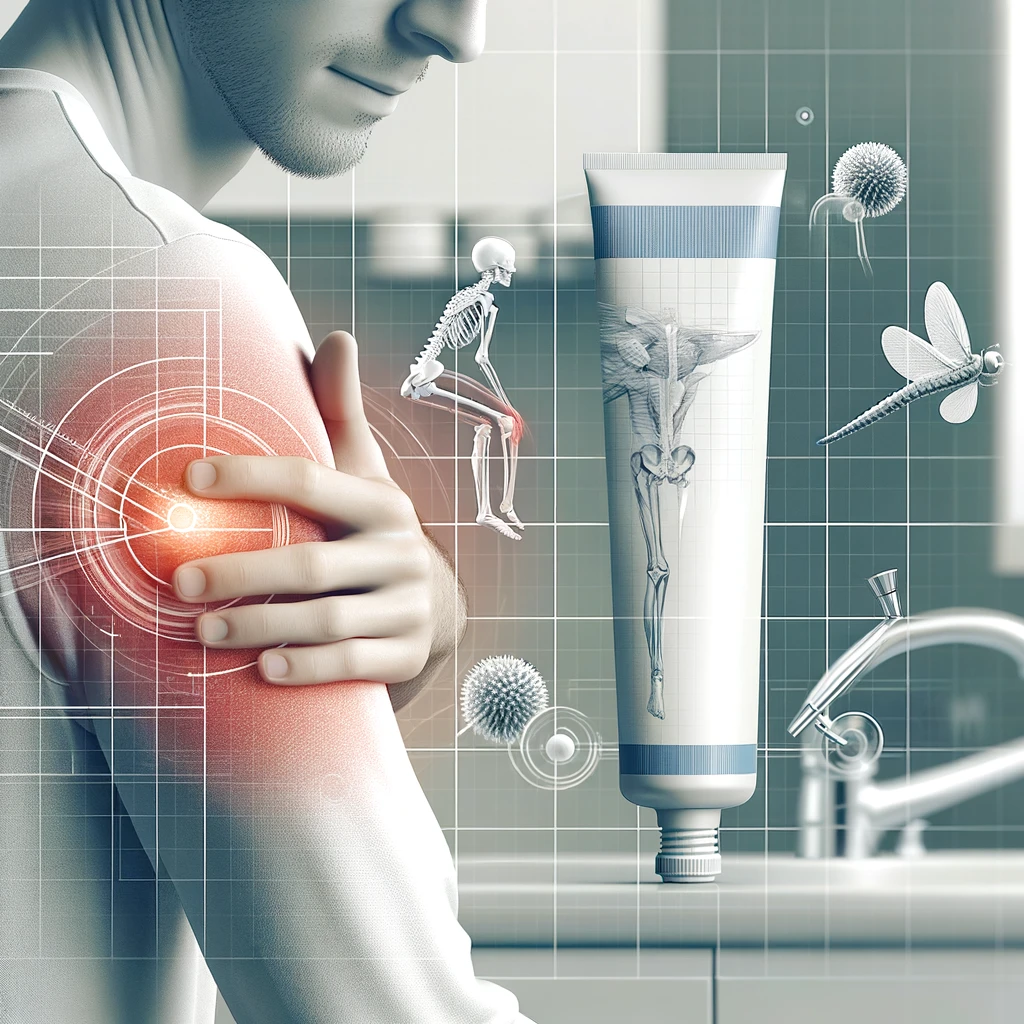
Key Ingredients in Pain Relief Creams
Common Active Ingredients (e.g., Menthol, Capsaicin)
In pain relief creams, some superhero ingredients do most of the work. 🦸 Menthol and capsaicin are two of the most popular ones. Menthol comes from peppermint and other mint plants, and it gives a cooling sensation that can really help soothe your pain. Imagine eating a minty candy that makes your mouth feel cool; menthol works like that but on your skin! 🍬
Capsaicin, on the other hand, is what makes chili peppers hot. 🌶️ When used in a cream, it warms up your skin, which can distract you from the pain and make sore areas feel better. It’s like a warm blanket on a chilly night, but just for your sore muscles or joints.
Both of these ingredients are great at tricking your body into feeling something different—like coolness or warmth—instead of pain. They are very common in many creams because they start working fast and can help with lots of different types of pain. 🏃♂️
Role of Emollients and Enhancers
Besides the main pain-fighting ingredients, pain relief creams also have helpers called emollients and enhancers. 🧴 Emollients make the cream smooth and help it moisturize your skin. They make sure the cream spreads evenly and feels nice when you apply it, which makes your skin soft and not itchy or dry.
Enhancers are ingredients that help the main pain relief ingredients work even better. They help these ingredients sink deeper into your skin where the pain is. Think of enhancers as the elevator in a tall building that helps people get to the top floors quicker. 🏢
Together, emollients and enhancers make sure the cream is not only effective at relieving pain but also pleasant to use. They make sure your skin feels good while also getting the medicine it needs right where it hurts. 🎯
Natural Oils and Extracts Used
Many pain relief creams also use natural oils and extracts because they’re gentle on the skin and can help with pain. 🌼 For example, eucalyptus oil and lavender oil are two popular choices. Eucalyptus oil can help relieve pain and bring down swelling, while lavender oil is great for calming and soothing your skin.
These natural ingredients come from plants and have been used for a long time by people all over the world to help with pain and heal skin. It’s like using a bit of nature’s own medicine cabinet. 🌿
Using natural oils and extracts in creams not only helps with pain but can also make the cream smell good and feel relaxing to use. This makes applying the cream a nicer experience, especially if you love pleasant, natural scents. 🌺 Each of these natural helpers brings its own special touch to help heal and soothe your body, making you feel better more naturally.
Choosing the Right Cream for Different Types of Pain
Muscle and Joint Pain
When you play too hard or exercise, sometimes your muscles and joints might start to hurt. This is where a good pain relief cream comes in handy. 🏋️♂️ Creams meant for muscle and joint pain often contain ingredients like menthol or camphor, which cool or heat up the skin to reduce the soreness and help you feel better.
These creams work by making the painful area feel a bit numb or by providing a soothing warmth that relaxes the muscles. It’s like getting a gentle massage from the cream itself! 🧖♂️ Just rub it on the sore spot, and it helps calm down the aches, making moving around easier and more comfortable.
It’s important to choose a cream that is specifically designed for muscle and joint pain, as these creams are made to penetrate deep into the muscle tissues and joints, targeting the exact type of pain you’re feeling. This makes them more effective for those specific aches compared to a general pain relief cream. 💪
Neuropathic Pain
Neuropathic pain comes from the nerves and is often described as a burning, stabbing, or shooting pain. 🌟 This type of pain needs a different kind of cream. Ingredients like capsaicin, which is derived from chili peppers, are common in creams for neuropathic pain. They help by making the skin feel hot, which distracts from the pain signals sent by the nerves.
Neuropathic pain can be tricky because it’s caused by nerve damage, so the cream needs to work on the nervous system level. Capsaicin creams can be really helpful because they reduce the intensity of pain signals over time. 🌶️ It’s like turning down the volume on a loudspeaker that’s playing annoying noises.
When picking a cream for neuropathic pain, it’s good to talk to a doctor or pharmacist to find the best option. These creams need to be applied carefully, following the instructions, to make sure they work well and safely. 🔍
Chronic vs. Acute Pain
Chronic pain is pain that lasts for a long time, often months or even longer, while acute pain is sudden and sharp but usually short-lived. 🕒 When choosing a pain relief cream, knowing whether your pain is chronic or acute can help you pick the right one.
For acute pain, like a sprained ankle from a soccer game, you might want a cream that works fast and cools the area quickly to reduce immediate swelling and pain. These are usually stronger and are meant to be used just for a short time. ⚽
For chronic pain, like ongoing back pain, you’ll want a cream that is safe to use over a longer period. These creams often have ingredients that help with inflammation and can be used as part of your daily routine to manage pain. They provide gentle and sustained relief, helping to make everyday activities more comfortable. 🌅
Understanding the type of pain you have helps you choose the best cream to relieve it. Each cream has its own special formula designed to tackle different kinds of pain, whether it’s quick relief for something sudden or long-term care for ongoing pain. 🎯

Creams for Inflammatory Conditions
Creams for Arthritis
Arthritis pain happens when your joints become inflamed, which can make moving around feel painful and stiff. 🤚 Creams made for arthritis have ingredients that help reduce swelling and pain. Some creams have menthol to cool down the hot feeling of inflammation, or capsaicin to warm the joints and decrease the pain signals.
Using a cream for arthritis is like giving your joints a soothing treatment. It helps you move more easily by making the joints less stiff. 🧘♂️ Rubbing the cream into your skin can also help because the massage makes the joint feel looser.
If you or someone you know has arthritis, choosing a cream specially made for arthritis can make a big difference. These creams are designed to target the specific type of inflammation in the joints, helping to bring comfort and improve daily activities. 🚶♀️
Post-Workout Recovery Creams
After a fun day of playing sports or a tough workout, your muscles might feel sore. This is called muscle fatigue, and it’s your body’s way of telling you it’s getting stronger. 💪 Post-workout recovery creams can help soothe this soreness. They often contain ingredients like arnica, which helps with swelling and pain.
These creams work by cooling down the tired muscles and reducing inflammation. Think of them as a reward for your hard work. Applying the cream feels refreshing and helps your muscles relax and recover faster. 🏋️♂️
Using these creams after exercise can make you feel better faster, so you’re ready to go and have fun or work out again sooner. It’s like helping your muscles to heal with a calming, cool touch. 🌬️
Creams for Sprains and Bruising
When you sprain something, like twisting your ankle, or get a bruise, your body sends fluid to protect the area, which causes swelling and pain. 🤕 Creams designed for sprains and bruising work by reducing this swelling and helping to heal the bruise faster.
Ingredients like witch hazel or comfrey are common in these creams. They have special properties that help tighten the skin and reduce fluid build-up, which lessens swelling and pain. 🌿 Rubbing the cream on a sprain or bruise helps these ingredients get right to where they’re needed most.
For quick relief and faster healing from sprains and bruises, reach for a cream made especially for these injuries. They provide the targeted care needed to help reduce the bruising and swelling, making you feel better and heal quicker. 🚀 Each application helps to soothe the pain and repair the damaged area, getting you back on your feet faster.
Safety and Side Effects
Potential Allergic Reactions
Using pain relief creams can sometimes lead to allergic reactions, which might make your skin red, itchy, or cause a rash. 🚨 This happens because your body sees something in the cream as unfamiliar and reacts to protect itself, just like how your body fights off germs that make you sick. Some signs of an allergic reaction include swelling, red spots, and feeling itchy or burning where you applied the cream.
To avoid any surprises, it’s smart to test the cream on a small area of your skin, like the inside of your wrist, before using it more widely. This is called a “patch test.” Wait a day to see if your skin reacts. If everything looks good—no redness or itchiness—it’s likely safe to use the cream elsewhere. 🧪
If you notice any signs of an allergic reaction, stop using the cream right away. Clean the area with mild soap and water to remove any remaining cream. If the reaction doesn’t improve, or if it gets worse, it’s important to seek advice from a healthcare professional. They can help soothe the reaction and recommend a different product that might be safer for your skin. 🆘
Long-term Use Considerations
If you use pain relief creams regularly over a long period, you might notice some changes or side effects. For instance, some strong creams can make your skin thinner or more sensitive if used too much. This can lead to irritation or even make your skin vulnerable to injuries. 🤕
It’s important to follow the instructions on the cream’s label and only use it as often as recommended. Using it more frequently can lessen its effectiveness over time, meaning you might feel like the cream isn’t helping as much. This is because your body can get used to the cream’s effects, which is similar to how you might stop noticing a smell if you’re around it too much. 👃
If your pain continues for a long time and you find yourself relying on the cream daily, it’s a good idea to consult with a doctor. They can assess your situation and perhaps suggest additional treatments that can be used with or instead of the cream. This helps ensure that you’re managing your pain safely and effectively. 👨⚕️
Interactions with Other Medications
When you use a pain relief cream along with other medications, they can sometimes interact in unexpected ways. These interactions can alter how your medications work, potentially reducing their effectiveness or causing side effects. For example, certain creams can increase the absorption of other drugs through the skin, leading to higher than expected levels in your body. 🌡️
It’s crucial to inform your doctor or pharmacist about all the medications you’re taking, including over-the-counter drugs, prescriptions, and even supplements. They can help you understand if the pain relief cream is safe to use with your current medications. 📝
If you experience any unusual symptoms while using the cream and other medications, such as increased pain, skin irritation, or unusual sensations, it’s important to report these to a healthcare professional. They can determine if it’s related to a drug interaction and adjust your treatment as necessary to keep you safe and healthy. 🚑
Using pain relief creams correctly is essential to avoid complications and ensure they help rather than cause additional issues. Always keep communication open with your healthcare providers and follow their guidance to manage your pain effectively.

Application Techniques for Maximum Benefit
Proper Application Methods
When you use a pain relief cream, it’s important to apply it the right way to get the best results. 🎯 Start by washing your hands and the area where you’ll apply the cream. This keeps germs away and makes sure the cream can do its job without any dirt getting in the way. Next, squeeze out a small amount of cream—usually, a pea-sized dab is enough—and gently rub it onto the area where you feel pain.
Rub the cream in using a circular motion until it’s fully absorbed into your skin. This helps the active ingredients penetrate deeply and start working faster. 🔄 Make sure not to use too much pressure; gentle movements are enough. After you’ve applied the cream, wash your hands again unless your hands are where you’re feeling pain, so you don’t accidentally spread the cream to your eyes or mouth.
It’s also smart to follow the directions on the package for how much cream to use and where to apply it. This helps you avoid any irritation and ensures that you’re using the cream safely and effectively. 📦
Frequency of Use
How often you use pain relief cream can vary depending on what your doctor recommends or the instructions on the cream itself. 🕒 Generally, it’s safe to apply the cream three to four times a day, especially when you’re feeling a lot of pain. It’s important not to use it more often than the label says because this could lead to irritation or even lessen the effectiveness of the cream over time.
For chronic pain, using the cream regularly at set times each day can help manage the pain consistently. ⏰ For sudden pain, like after a fall or during a headache, apply the cream as soon as you start feeling discomfort. This quick response can help reduce the pain faster and make you feel better sooner.
Always remember to give your skin a break between applications to prevent any potential irritation. And if you find that you need to use the cream more often than recommended, it’s a good idea to talk to your healthcare provider about other pain management options. 🗣️
Tips for Sensitive Skin Areas
When applying pain relief cream to sensitive areas, such as near the eyes, mouth, or on thinner skin, there are extra precautions you should take. 😬 First, avoid applying cream too close to your eyes or mouth, as the active ingredients can cause irritation or a burning sensation. If you need to apply near these areas, use a very small amount and apply it carefully.
For places with thinner skin, like the wrists or the back of your knees, start with a smaller amount of cream to see how your skin reacts. Thin skin can absorb the cream more quickly, making reactions more intense. 🤏 Always test a small area first before applying it more broadly, especially if you have sensitive skin or allergies.
Lastly, if you know you have sensitive skin, look for creams labeled as suitable for sensitive skin or hypoallergenic. These creams are formulated to be gentler and less likely to cause irritation. 🌸 And if you experience any redness, itching, or discomfort after applying the cream, wash the area with water and seek advice from a healthcare professional.
Innovations in Pain Relief Formulations
Time-Release Technologies
New technologies are making pain relief creams even better! One cool innovation is called time-release technology. 🕰️ This means the cream releases its pain-relieving ingredients slowly over time. Instead of getting all the help at once, you get it gradually, which helps manage the pain for a longer period without needing to reapply the cream too often.
Time-release creams are great because they make sure that the active ingredients are not used up too quickly. It’s like having a slow and steady drip of relief that keeps working even while you’re busy with other things, like playing or going to school. 🏫
This technology is especially helpful for managing chronic pain, where consistent pain relief is needed throughout the day. It helps you feel more comfortable and less distracted by pain, making everyday activities easier and more enjoyable. 🌟
Combination Therapies (e.g., with heating agents)
Some pain relief creams are getting smarter by combining different types of therapy in one product. These are known as combination therapies. For example, some creams mix pain-relieving ingredients with heating agents that warm up the area where you apply the cream. 🔥
The heat helps by making the blood vessels in your skin bigger, which can increase blood flow and help relax sore muscles. It’s like getting a warm compress and medicine all in one swipe! This combination can be more effective than using heat or medicine alone. 🌶️ + 🔥 = 💪
Combination therapies can target more aspects of pain and offer relief in various ways, making them versatile and powerful tools in fighting discomfort. They’re like multitasking superheroes for your pain, tackling it from different angles at once! 🦸♂️
Eco-friendly and Organic Options
Nowadays, more people want products that are not only good for them but also good for the planet. 🌍 That’s why there are now eco-friendly and organic pain relief creams. These creams use ingredients that are sourced from nature and do not harm the environment. They avoid chemicals that can be harsh or damaging, making them a kinder choice for the earth.
Organic ingredients are grown without artificial chemicals or pesticides, making them healthier for the soil and safer for the people who grow them and use them. When you choose an organic pain relief cream, you’re choosing a product that supports sustainable farming practices. 🌱
Eco-friendly creams often come in packaging that’s recyclable or biodegradable, too. This means less waste in our landfills and a smaller environmental footprint. By choosing these creams, you’re not just taking care of your body; you’re helping to take care of the planet! 🌏💚

Regulatory and Quality Considerations
FDA Guidelines for Pain Relief Creams
The Food and Drug Administration (FDA) is like a big, careful guardian that makes sure the pain relief creams you use are safe and work like they should. 🛡️ The FDA sets guidelines which are rules that companies must follow when they make and sell these creams. These guidelines help make sure that the ingredients in the cream are safe to use and that the cream does what it says it will do on the box.
For example, the FDA checks the ingredients to make sure they’re not harmful and that they actually help relieve pain. They also look at how the creams are made to ensure everything is clean and correct. This way, when you use a cream, you can be sure it’s not only effective but also safe. 🌟
Every pain relief cream that’s sold in stores has to meet these FDA standards. So when you see a cream that’s FDA-approved, you know it has passed some serious tests to get that approval. This helps keep you and your family safe when using these products. 🏅
Importance of Clinical Trials
Clinical trials are like big science experiments to test if new pain relief creams really work and are safe before they are sold. 🧪 Scientists use these trials to learn more about the cream, like what side effects it might have, how well it relieves pain, and if it causes any allergies. People volunteer to try these new creams under the watchful eyes of doctors and scientists.
These trials are super important because they help make sure that only the best and safest creams make it to the store shelves. They usually happen in phases; first, a small group of people tries the cream to see if it’s safe. Then, more people try it to see how well it works. This careful testing helps protect everyone from having bad reactions to new products. 📊
By participating in clinical trials, volunteers help everyone by making sure that only the best products are available for treating pain. It’s a way to help not just themselves but also others who will use the cream in the future. 🤝
Reading and Understanding Labels
When you pick up a pain relief cream, it’s important to read and understand the label. 📝 The label tells you what’s in the cream, how to use it safely, and what it’s supposed to help with. This information can help you choose the right cream for your pain and make sure you use it correctly.
The label will also tell you about any warnings, like if the cream shouldn’t be used on broken skin or near the eyes. It’s a bit like the instructions that come with a new toy, telling you how to use it so that it’s fun and safe. 🧸
Lastly, the label shows the expiration date, which tells you how long the cream is good to use. Using a cream past its expiration date might not be safe or effective. So, always check this date before buying or using a cream. This ensures you get the most benefit from it and keep yourself safe. 📅
Consumer Advice: Making an Informed Purchase
How to Read Reviews and Assessments
When you want to buy a new pain relief cream, it’s a good idea to see what other people think about it first! 🧐 Reading reviews can help you understand how well the cream works and what experiences other buyers have had. Look for reviews on websites, forums, or even videos where people talk about their real-life use of the cream.
Pay attention to what people say about how effective the cream is, how quickly it works, and any side effects they might have experienced. If many reviews say the cream works fast and helps a lot, it’s probably a good choice. 👍 But if many people complain about the same problems, like skin irritation, it might be better to consider a different product.
Also, look for reviews that seem honest and detailed. Reviews that give specific details about how someone used the cream and what results they got are usually more reliable than very short, vague comments. This can help you make a smarter choice about what to buy. 🕵️♂️
Cost vs. Efficiency
When choosing a pain relief cream, think about both the cost and how well it works. 💰 Sometimes, cheaper creams might not work as well or last as long, so you might end up using more of it or buying it more often, which can cost more in the long run.
It’s smart to compare different products to see which offers the best value. Look at how much cream you get for the price and how often you’ll need to apply it. Sometimes, spending a bit more on a better-quality cream can save you money because you use less of it and it keeps the pain away longer. 📊
Remember, the most expensive option isn’t always the best. Some mid-priced creams offer the best balance between quality and cost. It’s all about finding what works best for your needs and your budget. 👌
Where to Buy Reliable Pain Relief Creams
To make sure you’re buying a safe and effective pain relief cream, it’s important to shop at reputable places. 🏪 Reliable pharmacies, well-known health stores, and official online websites are good places to start. These places usually have standards to make sure the creams they sell meet safety and quality guidelines.
You can also buy directly from the manufacturers’ websites. This can be a great option because you can read a lot of information about the product and sometimes get better deals. 💻 Just make sure the website is the official one and not a copycat site trying to trick you.
If you’re not sure where to start, ask a healthcare professional like a pharmacist or a doctor. They can give you advice on where to find reliable creams and even suggest specific products that would be good for your needs. 🩺 This way, you can be confident that you’re getting a product that is both safe and effective.
Application and Usage: How to Properly Use Pain Relief Creams
Knowing not just what to use, but HOW to use it, can make a real difference in pain management. Here’s where I help you master the art of applying pain relief creams. It’s not complicated, but there are a few tips and tricks that can enhance the effectiveness of these products.
First things first, make sure your skin is CLEAN and DRY. This isn’t just about hygiene—it’s about allowing the active ingredients to penetrate without barriers. Now, don’t just slap the cream onto the skin. Instead, use a gentle touch to MASSAGE it into the area where you’re experiencing pain. This not only helps with absorption but it can also increase blood flow to the area, which is a good thing for pain relief.
And remember, more isn’t always better. Stick to the recommended amount—usually a pea-sized dab or a thin layer will do. Overdoing it won’t double your relief, and it could potentially irritate your skin or lead to other side-effects.
Read up on how often you should apply the cream. Most will suggest twice a day, but it depends on the specific product and pain severity. If your pain is persistent, consult your doctor—they might recommend a different application schedule or another treatment strategy.
What if you start to feel a burning sensation or skin irritation? First off, don’t panic. Some creams can cause minor discomfort as they start to work, but if it’s concerning or doesn’t subside, then WASH the area immediately with soap and water. It might mean this particular cream isn’t right for you.
As for side effects, listen to your body. If you notice redness, swelling, or an increase in pain, it’s time to stop use and talk to a healthcare professional. They’re your go-to resource for ensuring you’re on the right track and can provide alternatives if necessary.
Now, let’s pivot to what can further enhance your pain relief journey. In the next section, I’m going to introduce you to the broad world of complementary therapies and lifestyle adjustments that can work hand-in-hand with your topical treatment.
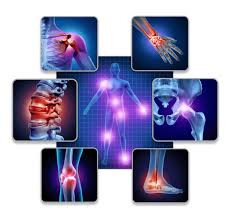
Beyond Creams: Complementary Therapies and Lifestyle Adjustments
Pain relief isn’t just about applying a cream and hoping for the best. It’s a multi-faceted approach that often requires looking at the bigger picture. You’re going to find out about the whole-body strategies that can complement the use of pain relief creams.
Incorporating exercise into your routine can strengthen muscles and reduce pain over time. I’ll guide you through selecting activities that can enhance your mobility without exacerbating pain.
A balanced diet and proper hydration can also play crucial roles in managing pain. I’ll discuss nutrients that have anti-inflammatory properties and how they contribute to pain relief.
Sufficient rest and stress management are often underestimated in their ability to impact pain. Learn how enhancing the quality of your sleep and employing relaxation techniques can lead to significant improvements in pain management.
If you’ve been diligent with your cream application, lifestyle choices, and still find yourself struggling with pain, I’ll talk about when it might be time to revisit your healthcare professional. Persistent pain may require more in-depth medical intervention, and I’ll help you recognize when that step is necessary.
Remember, your journey to pain relief is personal, and adjustments may be needed as you go. You can always refine your approach down the road. The goal is to find a comprehensive pain management plan that resonates with your unique situation.
Our YouTube channel Gym Rat Tips!
Check Out Our I Fund women Campaign!
Check out Our Social Media Accounts!
[Disclaimer: Consult a healthcare professional before starting any new pain soothing regimen. “No Youchie” is not intended to diagnose, treat, cure, or prevent any disease illness or injury.]
Pain Relief Solution Is No Youchie!
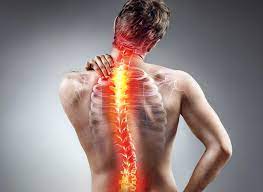
Understanding The Ingredients In Pain Relief Creams
I’m going to kick things off by shedding some light on pain relief creams. These topical remedies are staples in medicine cabinets worldwide, relied upon for their quick and localized relief. Whether it’s for muscle aches, joint pain, or just general soreness, chances are you’ve reached for one of these creams seeking comfort.
Now, pain relief creams come in all shapes and sizes, but the key to their effectiveness lies beneath the lid – in the ingredients they contain. From gels that cool on contact to ointments that heat up your skin, the variety available can be a lot to handle. But don’t worry, because by the end of this exploration, you’ll be navigating those choices like a pro. Understanding The Ingredients In Pain Relief Creams will be your new hobby.
But before you slather on the nearest tube of relief, it’s crucial to understand what goes into these creams and how they work. This isn’t just about finding temporary relief; it’s also about making informed choices for your health. The next section is going to pull back the curtain on the active ingredients. Think of them as the leading actors in the drama of pain relief – they’re the ones fighting the discomfort directly on your skin’s stage.
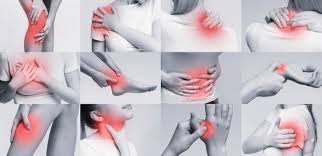
Introduction to Pain Relief Creams. 🌟
Pain relief creams are special creams that you can rub on your skin to help reduce pain. They are great when you have sore muscles or joints after playing sports or if you have an ache from sitting too long. These creams work fast because they’re applied right where it hurts! 🎯
Importance of Active Ingredients in Pain Relief.
The Crucial Role of Active Ingredients.
Active ingredients are the main helpers in pain relief creams. They focus on the parts of your body that hurt, like a sore muscle or an aching joint. These ingredients work to calm the pain so you can feel better. 🌟
How Active Ingredients Make a Difference.
Active ingredients are picked for their ability to quickly ease pain. They go right into your skin, straight to where it hurts. This helps manage the pain well and gives you relief right where you need it. It’s like having a superhero for pain relief in your medicine cabinet! 🦸

Overview of Analgesics vs. Anti-Inflammatories.
Understanding Analgesics and Anti-Inflammatories.
Analgesics and anti-inflammatories are two types of active ingredients in pain relief creams. Analgesics help stop the pain signals to your brain, so you feel less pain. Anti-inflammatories reduce swelling and redness, which helps lessen the pain. 🆚
Comparing Their Roles in Pain Management.
Analgesics act like pain blockers, while anti-inflammatories help heal by reducing inflammation. Whether used together or alone, these ingredients provide relief from different sides, making sure you get the best help for your pain. They are essential for both quick relief and long-term improvement. 🤹
Role of These Ingredients in Managing Pain.
How Active Ingredients Manage Pain.
Active ingredients in pain relief creams work hard to manage pain effectively. They do this by interacting with your body’s natural pain signals and inflammatory responses. By calming these responses, the creams help you go back to your daily activities with less discomfort and more ease. 🚀
Targeting Pain at Its Source.
These components are designed to target the exact locations on your body where pain originates. Whether it’s a strained muscle or a stiff joint, the active ingredients focus right on these spots, offering targeted relief that feels like it’s hitting the bullseye of your pain. 🎯
Understanding Analgesics.
Definition and Function of Analgesics.
Analgesics are medications or ingredients in creams that specifically help to relieve pain. They work by blocking pain signals before they reach your brain or by reducing the brain’s awareness of the pain. This makes them an essential part of pain relief treatments. 📚
Common Types of Analgesics in Creams.
Common analgesics in pain relief creams include ingredients like menthol and lidocaine. These substances have properties that either cool or numb the affected area, providing quick relief from discomfort. Each type of analgesic has a unique way of easing your pain. 🧴
How Analgesics Interact with Body Chemistry.
Analgesics interact with your body’s chemistry by affecting the nerve signals that feel pain. For example, menthol creates a cooling sensation that can temporarily override the pain signals, while lidocaine numbs the area to reduce the sensation of pain. It’s a fascinating science that helps keep you comfortable. 🔬
Examples: Menthol, Lidocaine.
Menthol and lidocaine are two powerful examples of analgesics used in many pain relief creams. Menthol provides a cooling effect that soothes sharp pain quickly, while lidocaine works as a local anesthetic to numb the painful area. Both are excellent at providing fast relief. 💡

The Cooling Effect of Menthol.
How Menthol Provides a Cooling Sensation.
Menthol works by stimulating the cold receptors in your skin, which makes you feel a cooling sensation. This sensation can distract your body from the pain, making you feel relief instead. It’s like having a mini ice pack wherever and whenever you need it. ❄️
Interaction with Cold-Responsive Sensors in the Skin.
When menthol is applied to the skin, it triggers a specific reaction in the cold-responsive nerve sensors. These nerves respond to the cooling effect almost as if you’re applying actual ice, helping to reduce the sensation of pain through a natural, cooling mechanism. 🌬️
Benefits of Menthol for Muscle Soreness.
Menthol is especially great for muscle soreness because it not only cools but also slightly numbs the area, reducing the feeling of pain. This makes it perfect for use after workouts or physical activities where muscles might be tired and achy. 🏋️♂️
Ideal Situations for Using Menthol-Based Creams.
Menthol-based creams are ideal for acute pains and aches, like those from sprains, muscle cramps, or minor sports injuries. They provide quick relief that helps you recover faster, making them a go-to choice for athletes and physically active people. 🏃♂️
The Heating Action of Capsaicin.
Capsaicin’s Origin from Chili Peppers.
Capsaicin, the ingredient that makes chili peppers hot, is also used in pain relief creams for its heating effect. When applied to the skin, capsaicin can help reduce pain sensations by warming the area, which distracts from the pain. 🌶️
Mechanism: How Capsaicin Reduces Pain Signals.
The heat from capsaicin works by desensitizing sensory receptors in the skin. Over time, these receptors become less responsive to pain signals, effectively reducing the feeling of pain. This process is known as “defunctionalization” of the pain fibers. 🔥
Counterintuitive Approach to Pain Management Using Heat.
Using heat to manage pain might seem counterintuitive, but the warmth from capsaicin creams can increase blood flow and reduce muscle stiffness. This helps in not just managing pain but also in promoting faster healing of the affected area. 🌡️
When to Choose Capsaicin Creams for Pain Relief.
Capsaicin creams are best used for chronic pain conditions like arthritis or persistent muscle stiffness. They are not suitable for acute or inflamed injuries but can be very effective for long-term pain management and relief. 🕒
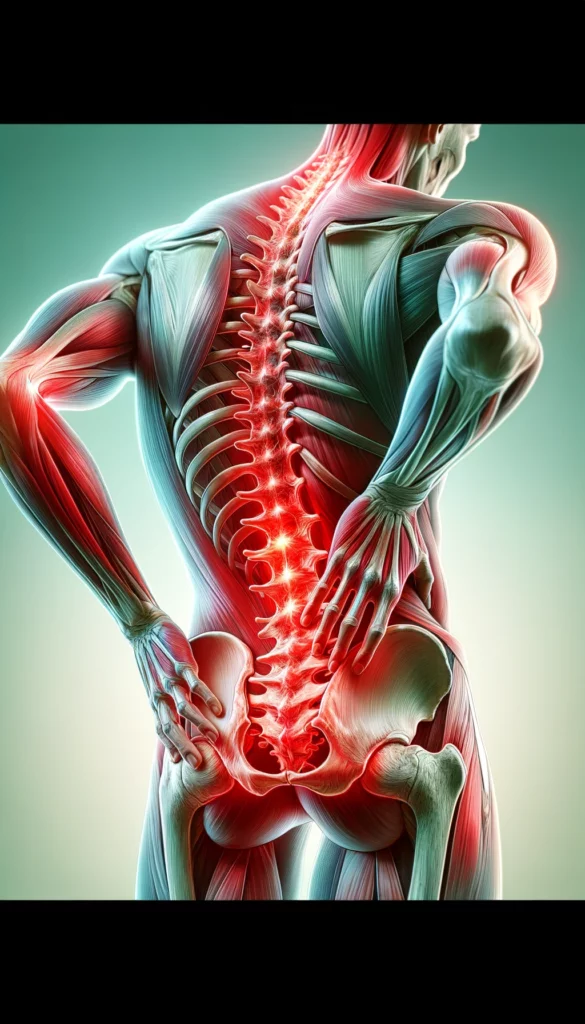
Exploring Anti-Inflammatory Ingredients
Role of Anti-Inflammatories in Pain Relief Creams.
Anti-inflammatory ingredients play a vital role in pain relief creams by reducing inflammation, which is often the underlying cause of pain. By controlling inflammation, these ingredients help alleviate pain and promote healing. 💊
Importance of Reducing Inflammation to Alleviate Pain.
Reducing inflammation is crucial because it not only lessens pain but also helps prevent further damage to tissues. Anti-inflammatory ingredients help to calm inflamed areas, providing a pathway to faster and more effective healing. 🛡️
Common Anti-Inflammatory Ingredients.
Common anti-inflammatory ingredients found in pain relief creams include salicylates and diclofenac. These substances help reduce inflammation by blocking the chemicals in your body that cause swelling and pain. 🌟
Examples: Salicylates, Diclofenac.
Salicylates, related to aspirin, and diclofenac, a stronger non-steroidal anti-inflammatory drug (NSAID), are examples of anti-inflammatories used in pain relief creams. Each works in its own way to reduce inflammation and ease pain, making them valuable in pain management. 📋
Benefits of Salicylates.
Relationship to Aspirin.
Salicylates are chemically similar to aspirin, a well-known pain reliever. Just like aspirin, salicylates help reduce inflammation and pain, but they can be applied directly to the skin, targeting the specific area of discomfort. 🌿
How Salicylates Reduce Inflammation.
Salicylates work by inhibiting the production of certain chemicals in the body that are involved in the inflammatory process. This direct action helps to decrease swelling, redness, and pain, making them effective for treating localized pain. 🔍
Use Cases for Joint and Muscle Pain.
Salicylate-based creams are particularly good for joint and muscle pain because they can be applied right where it hurts. Whether it’s a sore knee from running or an aching shoulder from tennis, salicylates provide targeted pain relief. 🎾
Tips for Using Salicylate-Based Creams Effectively.
When using salicylate-based creams, it’s important to apply them correctly. Make sure the area is clean and dry, apply a small amount, and gently massage it into the skin. This helps the active ingredients penetrate deeply and work effectively. ✅

Diclofenac: A Potent Anti-Inflammatory.
Overview of Diclofenac as an NSAID.
Diclofenac is a powerful non-steroidal anti-inflammatory drug (NSAID) used in many pain relief creams. It’s known for its strong ability to reduce inflammation and relieve pain, making it a popular choice for more severe pain conditions. 🚀
Effectiveness in Combating Inflammation.
Diclofenac is highly effective at reducing inflammation due to its potent chemical structure that directly targets and blocks the pathways that lead to inflammation. This makes it an excellent option for treating conditions like arthritis. 💪
Availability in Over-the-Counter vs. Prescription Forms.
Diclofenac is available in both over-the-counter and prescription strengths, giving you options depending on the severity of your pain. The over-the-counter versions are great for milder cases, while prescription forms are used for more intense pain. 🛒
How Diclofenac Absorbs into Tissue and Reduces Inflammation.
When applied topically, diclofenac absorbs into the skin and reaches the underlying tissues where inflammation is present. By acting directly at the site of discomfort, diclofenac effectively reduces inflammation and the associated pain. 🎯
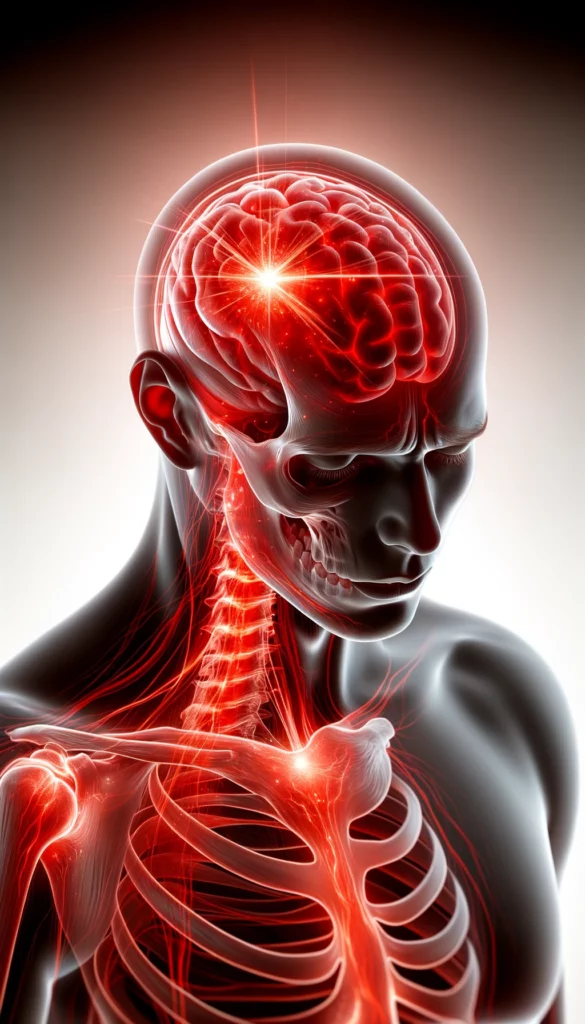
Choosing and Using Pain Relief Creams Safely.
How to Select the Right Cream for Specific Pain Types.
Choosing the right pain relief cream depends on understanding the type of pain you have. For muscle aches, a cooling cream might be best; for joint pain, an anti-inflammatory might work better. Knowing what each ingredient does helps you pick the right one. 📝
Understanding the Nuances of Each Active Ingredient.
Each active ingredient in pain relief creams has its own benefits and uses. Menthol cools, capsaicin heats, and diclofenac reduces inflammation. Understanding these can help you use each cream to its fullest potential, ensuring you get the most relief. 🤓
Importance of Consulting with Healthcare Professionals.
Before using any pain relief cream, especially with strong active ingredients like diclofenac, it’s a good idea to talk to a healthcare professional. They can advise you on which cream is best for your specific pain and health condition. 🩺
Monitoring Effects and Adjusting Treatment as Necessary.
After you start using a pain relief cream, keep an eye on how it affects your pain. If you don’t see improvement, or if you experience any irritation, it might be time to adjust your treatment. Always be attentive to how your body responds and make changes if needed. 🔄
Roles of Inactive Ingredients.
Explanation of How Inactive Ingredients Support Active Ingredients.
Inactive ingredients in pain relief creams aren’t just filler materials; they play crucial roles too! They help the active ingredients work better by making sure they mix well and reach the right places on your skin. Imagine if you had a super team where some members planned the strategy and others fought the battles. Inactive ingredients are like the planners who make sure the fighters (active ingredients) can do their job effectively. 🛡️
Importance of Carriers in the Delivery of Active Ingredients.
Carriers are a type of inactive ingredient that have a special job: they carry the active ingredients through the cream onto your skin where it hurts. Without carriers, the active parts wouldn’t be able to move around and do their work. It’s a bit like using a bus to get to school; without the bus, it would be much harder to get there! 🚌
Enhancement of Product Stability and Shelf Life.
Inactive ingredients also help your pain relief cream stay good for a long time on the shelf. They make sure the cream doesn’t go bad quickly and keeps its strength until you need to use it. It’s like putting food in the fridge to keep it fresh until you’re ready to eat it. This way, the cream is always ready to help when you have a pain. 🕰️.
Impact on the Texture and Scent of the Cream.
Have you ever noticed how some creams feel nice and smooth, and others might feel sticky or greasy? Inactive ingredients affect how a cream feels and smells. They can make it soft, make it smell nice, or even stop it from smelling bad. It’s like choosing clothes that look good and feel comfy to wear. 🌺
Common Carriers and Their Functions.
Overview of Aloe Vera as a Hydrating Agent.
Aloe vera is a super cool plant that is often used in pain relief creams as a carrier. It’s really good at holding water, so it helps keep the skin hydrated and happy when you apply the cream. Aloe vera is like a tiny water bottle for your skin, giving it a drink when it’s dry. 🌱
Benefits of Lanolin in Moisture Retention.
Lanolin is another awesome ingredient found in some creams. It comes from sheep’s wool and is super good at keeping moisture locked into your skin. Think of lanolin like a cozy blanket that keeps all the warmth in on a chilly night, but for your skin, it keeps in moisture so it doesn’t get dry and itchy. 🐑
Role of Other Common Carriers like Mineral Oil and Shea Butter.
Mineral oil and shea butter are like the VIPs of carriers in many creams. Mineral oil helps the cream glide smoothly over your skin, making it easy to spread. Shea butter is rich and creamy, making your skin feel super soft and nourished. Together, they make sure the cream works well and feels great. 🧴
How Carriers Improve the Absorption of Active Components into the Skin.
Carriers don’t just transport active ingredients; they also help these ingredients absorb into your skin better. This means that the good stuff in the cream can go deeper into your skin, where it can work faster and more effectively. It’s like these carriers are helping the active ingredients dive deep into a pool to cool off quickly. 🏊

Skin Sensitivity and Allergic Reactions.
Identification of Common Irritants in Pain Relief Creams.
Sometimes, things in creams can make your skin feel irritated or itchy, especially if you have sensitive skin. Ingredients like alcohol or artificial fragrances are common culprits. Knowing what’s in your cream can help you avoid these irritants, just like knowing which foods you’re allergic to can help you stay healthy. 🚫
Examples of Irritants Like Methylparaben and Propylene Glycol.
Methylparaben and propylene glycol are two ingredients that some people might find irritating. Methylparaben is used to keep creams fresh, and propylene glycol helps mix things together well. But for some, they can cause redness or itching. It’s important to know what these ingredients do, so you can choose a cream that’s right for you. 🤔
Importance of Recognizing Potential Allergens.
Knowing which ingredients might cause allergies is super important. This knowledge helps you pick a cream that won’t make your skin upset. Just like you wouldn’t eat a food that could make you sick, you shouldn’t use a cream with stuff that could irritate your skin. It’s all about making smart choices to stay comfortable. 🌟
Strategies for Selecting Creams Suitable for Sensitive Skin.
If you have sensitive skin, it’s a good idea to choose creams that are made especially for you. Look for words like “hypoallergenic” or “for sensitive skin” on the label. These creams are usually made without the harsh ingredients that can cause problems. It’s like choosing a gentle soap instead of a strong one. 🧼
Performing a Patch Test.
Importance of Conducting a Patch Test Before Using New Creams.
Before you use a new pain relief cream, it’s really smart to do a patch test. This means putting a little bit of the cream on a small part of your skin to see how it reacts. It’s like a mini experiment to make sure the cream is safe for you. 🔬
Detailed Steps on How to Perform a Patch Test.
To do a patch test, just put a tiny bit of cream on your inner wrist or elbow, because the skin there is sensitive. Leave it there for a day and make sure it doesn’t get wet. Then, watch to see if your skin gets red, itchy, or uncomfortable. This test helps you be sure the cream is okay for you. 🧪.
What Signs to Look for That Indicate a Negative Reaction.
During a patch test, look for signs like redness, bumps, swelling, or itching. If you see any of these, it might mean you’re allergic or sensitive to something in the cream. It’s like your skin is saying, “Hey, this isn’t right for me!” 🚩
How to Interpret Patch Test Results and Decide on Product Suitability.
If your patch test is clear and you don’t see any bad reactions, the cream is probably safe to use. If you do see a reaction, it’s best to try a different product. Understanding the results helps you choose the right cream, just like understanding answers on a test helps you learn better. 📘
Moisturizers and Skin Barrier Enhancers
Role of Moisturizers in Inactive Ingredient Lists.
Moisturizers in pain relief creams do more than just make your skin feel soft. They help protect your skin by keeping it hydrated. This is important because dry skin can make pain feel worse. It’s like moisturizers build a little shield to keep your skin safe and comfy. 🛡️
Specific Benefits of Ingredients Like Glycerin and Ceramides.
Ingredients like glycerin and ceramides are heroes when it comes to moisturizing. Glycerin pulls water into your skin, keeping it plump and happy. Ceramides help hold your skin cells together, making sure the moisture doesn’t escape. Together, they keep your skin’s barrier strong and healthy. 💧
How These Ingredients Help Maintain Skin Health.
By keeping your skin moisturized and healthy, these ingredients help you feel better overall. Healthy skin is less likely to get irritated or hurt, which means you can keep doing all the fun things you love without worrying about discomfort. It’s like these ingredients are your skin’s best friends, always looking out for it. 🌟
Importance of Skin Barrier Enhancement in Pain Management.
A strong skin barrier is key to managing pain because it prevents irritants from getting into your skin. Ingredients that enhance your skin barrier make it tougher, like a castle wall that keeps enemies out. This means less irritation and less pain, helping you stay happy and active. 🏰

Emulsifiers and Stabilizers.
Definition and Function of Emulsifiers in Creams.
Emulsifiers are special ingredients that help mix oil and water in your cream, which usually don’t like to mix. It’s like they’re peacemakers that help everyone get along. This mixing is important for making sure the cream is smooth and works well when you apply it to your skin. 🌪️
Common Emulsifiers Used in Pain Relief Products.
Some common emulsifiers you might find in pain relief creams include lecithin and stearic acid. These help keep the cream from separating into oil and water parts, which can make it weird and hard to use. It’s like they keep the cream team working together nicely. 👯♀️.
Role of Stabilizers in Maintaining Product Consistency.
Stabilizers are like the rules in a game that make sure everything runs smoothly. In pain relief creams, they help keep the texture consistent so that every time you use it, it feels the same. This consistency is important because it makes the cream reliable and easy to use. 🎮
Impact of These Ingredients on the Overall Product Experience.
Emulsifiers and stabilizers make the cream feel nice and work the same way each time you use it. They ensure that the cream is always ready to help with your pain and doesn’t turn into a lumpy or oily mess. It’s like having a dependable tool that you know will always work right when you need it. 🔧
Navigating Ingredient Labels.
Tips on How to Read and Understand Ingredient Labels.
Reading ingredient labels on pain relief creams can be like solving a puzzle. Look for the big words that tell you what the main ingredients are, and notice where they are on the list. Ingredients listed first are in the biggest amounts. This can help you figure out what’s really in your cream. 🧐
The Significance of the Order of Ingredients Listed.
The order of ingredients on the label is super important. Ingredients are listed from the highest amount to the lowest. So, if something is at the beginning of the list, there’s a lot of it in the cream. Knowing this helps you understand how much of each ingredient you’re putting on your skin. 📝
How to Identify Key Inactive Ingredients and Their Purposes.
To find out what the inactive ingredients do, you can look them up online or ask someone who knows about skincare. Sometimes, these ingredients help the cream feel better on your skin, keep it fresh, or make it easier to apply. Knowing what they do helps you choose the best cream for your needs. 🕵️♂️
Resources for Researching Unfamiliar Ingredients for Safety.
If you’re not sure about an ingredient, there are lots of places online where you can learn more about it. Websites like the Environmental Working Group (EWG) or other health and skincare sites have tons of information. This can help you feel safe about what you’re using on your skin. 🌍
Adjusting Treatment Based on Skin Response.
Importance of Monitoring Skin’s Response to a New Cream.
When you start using a new pain relief cream, it’s a good idea to watch how your skin reacts over a few days. It’s like keeping an eye on a new pet to make sure it’s happy in your home. This way, you can be sure the cream is good for you and not causing any trouble. 🐶
Steps to Take if an Adverse Reaction Occurs.
If you notice that your skin is getting red, itchy, or uncomfortable after using the cream, it’s important to stop using it and wash the area with water. Then, you can try a different cream to see if it’s better for your skin. It’s like switching to a different game if the first one isn’t fun. 🔄
When to Consider Switching to a Different Product.
If you keep having problems with a cream, it might be time to try something else. There are lots of different pain relief creams out there, so you can find one that doesn’t bother your skin. It’s important to find a cream that makes you feel better, not worse. 🆕
Consultation with Healthcare Professionals for Persistent Issues.
If you’ve tried a few creams and still have skin problems, it might be a good idea to talk to a doctor or a dermatologist. They can help you figure out what’s going on and suggest a cream that will be safe and effective for you. It’s always good to get help when you need it. 👩⚕️👨⚕️

Definition of Natural and Synthetic Ingredients.
Understanding Natural Ingredients: Sources and Types.
Natural ingredients come from the earth, like plants, minerals, or animals. Think of them as ingredients you might find in your garden or in nature, like lavender or clay. They are popular because they come from natural sources, and many people believe they are gentler on the skin. 🌿
Overview of Synthetic Ingredients: Creation and Purpose.
Synthetic ingredients are made by scientists in labs. They can be designed to act like natural ingredients or to perform even better. These ingredients are great for creating strong effects or when a natural ingredient is hard to find or expensive. They make sure your cream works the same every time you use it. 🔬
Comparison of the Basic Differences Between Natural and Synthetic.
Natural ingredients are from nature, and you might recognize their names from things you see outside, like aloe or tea tree oil. Synthetic ingredients, however, are made by people and have names that often sound more scientific. While natural ingredients can vary in strength, synthetic ones are usually more consistent in how they work. 🌱 vs. 🧪
Explanation of How Each Type is Used in Pain Relief Creams.
In pain relief creams, natural ingredients might be used for their soothing properties, like aloe vera for cooling. Synthetic ingredients might be added to ensure the cream is effective, like synthetic menthol for a strong cooling sensation. Both types are important and help the cream do its job better. 🤝
Common Natural Ingredients in Pain Relief Creams.
Examples of Plant-Derived Ingredients (e.g., Arnica, Turmeric).
Many pain relief creams use plants like arnica and turmeric because they are known to help reduce pain and swelling. Arnica can be really helpful for bruises, and turmeric is great for overall inflammation. These are ingredients you might even find in healthy recipes! 🌼
Use of Minerals and Animal Products (e.g., Beeswax).
Other natural ingredients in creams include minerals like zinc or animal products like beeswax. These ingredients help make the cream thick and easy to apply. Beeswax also helps protect your skin by creating a barrier that keeps moisture in and germs out. 🐝
Benefits of Natural Ingredients in Treating Pain.
Natural ingredients are loved by many because they work well and are gentle on the skin. They help soothe pain naturally, often with fewer side effects. Using ingredients from nature can make you feel good about what you’re putting on your skin. 🌱➕🩹
Specific Roles of Popular Natural Ingredients Like Arnica and Turmeric.
Arnica is amazing for reducing bruises and swelling quickly, while turmeric is a superstar for fighting inflammation. When used in pain relief creams, they bring their natural powers to help you heal faster and feel better sooner. 💪
Overview of Synthetic Ingredients.
Introduction to Lab-Created Synthetic Compounds.
Synthetic compounds are created in laboratories to ensure they are pure and powerful. Scientists can tweak these ingredients to make them work exactly as needed, which is great for treating specific types of pain or skin conditions. 🧬
Examples of Synthetic Ingredients (e.g., Lab-Synthesized Menthol).
A common synthetic ingredient in pain creams is lab-synthesized menthol. It’s made to provide a cooling effect that’s very strong and lasts longer. This kind of menthol is reliable and ensures every batch of the cream feels the same. ❄️
Advantages of Using Synthetic Ingredients in Formulations.
Using synthetic ingredients helps make every tube of cream consistent. This is important because it means you’ll get the same relief every time you use it. They can also be more cost-effective and easier to source than natural ingredients. 🔄.
How Synthetic Ingredients Enhance or Mimic Natural Properties.
Synthetic ingredients can be designed to act just like natural ones or even better. For example, scientists can create a version of aloe that doesn’t spoil quickly. This helps your cream stay good for longer and be more effective. 🧪➡️🌿

Efficacy of Natural vs. Synthetic Ingredients.
Comparative Effectiveness in Pain Relief.
Some studies show that natural ingredients are really good at treating pain, especially when you prefer a gentler approach. Synthetic ingredients are often chosen for their strength and reliability. Both have their place in making creams effective. 📊
Consistency and Reliability of Synthetic Ingredients.
Synthetic ingredients are super consistent. This means they work the same way every time you use them. If you’re looking for reliable relief from pain, synthetic might be the way to go because you know exactly what to expect. 🎯
Variability and Potency of Natural Ingredients..
Natural ingredients can vary a bit because they come from nature, and no two plants are exactly the same. Sometimes this means the cream might feel a bit different each time. But many people love natural ingredients for their unique and potent effects. 🌾
Case Studies or Research Supporting Efficacy of Each Type.
There are many studies that compare natural and synthetic ingredients. Some people find that natural ingredients work better for their skin, while others prefer the strong effects of synthetic ones. It really depends on your needs and what works for your body. 📝
Safety and Allergenic Potential.
Safety Profiles of Natural and Synthetic Ingredients.
Both natural and synthetic ingredients are tested for safety. Natural ingredients are generally safe but can cause allergies in some people, just like pollen from flowers. Synthetic ingredients are tested to make sure they are safe for most people to use. 🛡️
Common Allergenic Concerns with Natural Extracts.
Natural extracts like almond oil or lanolin can be allergenic. If you have sensitive skin or allergies, you might react to these natural ingredients. It’s important to know what you’re sensitive to so you can choose the right cream. 🚫🌼
Rigorous Purification Processes of Synthetic Compounds.
Synthetic ingredients go through strict processes to make sure they are pure and safe. This means they often have fewer impurities than natural ingredients. If you have sensitive skin, synthetic ingredients might actually be better because they are so clean. 🔬
Potential Risks and Irritants Associated with Both Types.
Both natural and synthetic ingredients can cause irritation or allergies. It’s important to know how your skin reacts to different substances. Always try a small amount of new cream on your skin to see how it reacts before using it more widely. 🧴➡️🔍
Cost and Accessibility.
Cost-Effectiveness of Synthetic Ingredients.
Synthetic ingredients can often be made cheaper than sourcing natural ones, especially if the natural ingredient is rare or hard to harvest. This can make synthetic-based creams more affordable and accessible to more people. 💲
Availability and Sourcing Issues with Natural Ingredients.
Natural ingredients can be harder to get because they depend on farming conditions, like the right weather and soil. This can make creams with natural ingredients more expensive or harder to find sometimes. 🌍
Impact of Ingredient Type on Product Pricing.
The type of ingredients in a cream can really affect the price. Natural ingredients might make the cream cost more because they’re harder to get. Synthetic ingredients might be cheaper and more consistent in price. This is important to think about when you’re choosing a cream. 💸
Considerations for Consumers When Choosing Based on Budget.
When you’re picking a pain relief cream, think about your budget. If you have more to spend, you might want to try a cream with special natural ingredients. If your budget is tight, a synthetic-based cream might be a good choice because it’s more consistent and often cheaper. 🏷️
Consumer Preferences and Perceptions.
Trends in Consumer Choices Between Natural and Synthetic.
Some people prefer natural ingredients because they feel they are gentler and more eco-friendly. Others like synthetic ingredients for their reliability and consistency. It’s interesting to see how different people choose what they like best. 📉📈
Perceived Benefits of Natural Ingredients in Wellness Communities.
In communities that focus on wellness and natural living, natural ingredients are often seen as the best choice. People believe they are safer and healthier for the body and the environment. This is why some creams highlight their natural ingredients on the label. 🌿🏷️
Trust and Skepticism in Synthetic Ingredients.
While synthetic ingredients are effective and reliable, some people are skeptical about using them. They worry about long-term effects or how natural they are. However, many synthetic ingredients are safe and can be a good choice, especially if you need strong pain relief. 🤔💭
Influence of Marketing on Consumer Perceptions.
How companies market their creams can really influence what people think and choose. Ads that show beautiful natural scenes might make you think a cream is full of natural ingredients, even if it isn’t. It’s always good to read the label and really understand what’s in your cream. 📺🌿
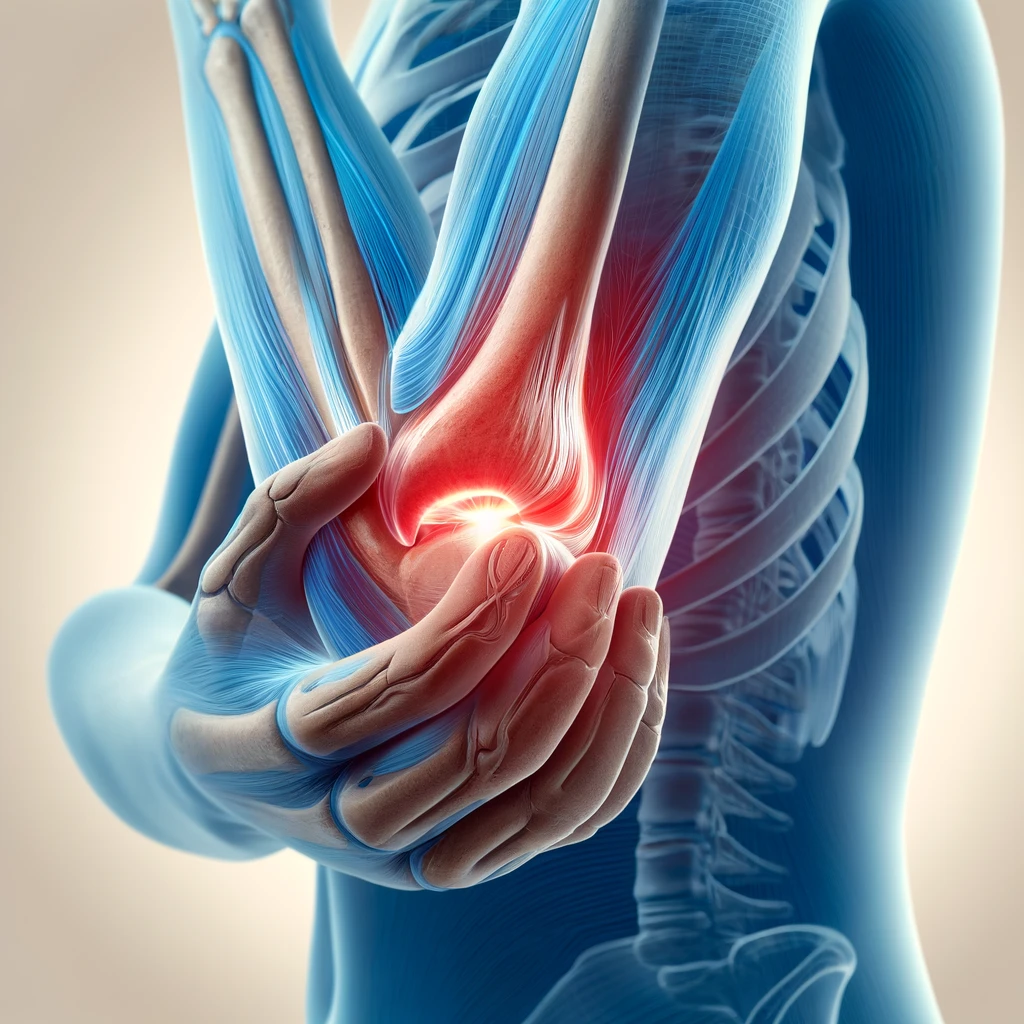
Making an Informed Decision.
Factors to Consider When Choosing Between Natural and Synthetic.
When choosing a cream, think about what’s important to you. Do you want something all-natural? Are you looking for something super effective and consistent? Understanding your own needs and preferences can help you make the best choice. 🤔
Importance of Understanding Individual Skin Sensitivities.
Everyone’s skin is different. What works great for one person might not work for another. It’s really important to know how your skin reacts to different ingredients, both natural and synthetic. This can help you avoid irritation and get the best results from your cream. 🧴🔍
Role of Personal and Ethical Values in Ingredient Choice.
Your personal values can also play a big part in your choice. If you care a lot about the environment, you might prefer a cream with sustainable, natural ingredients. If you’re more concerned about effectiveness and price, you might lean towards synthetic ingredients. 🌍💡
Recommendations for Testing and Trialing Products Before Regular Use.
Before you start using a new cream regularly, it’s a good idea to test it out. Try a small amount on a patch of skin and see how it reacts. This test can tell you if the cream is good for your skin and if you like how it feels and works. This is a smart way to make sure you’re happy with your choice before you use it all the time. 🧪👍
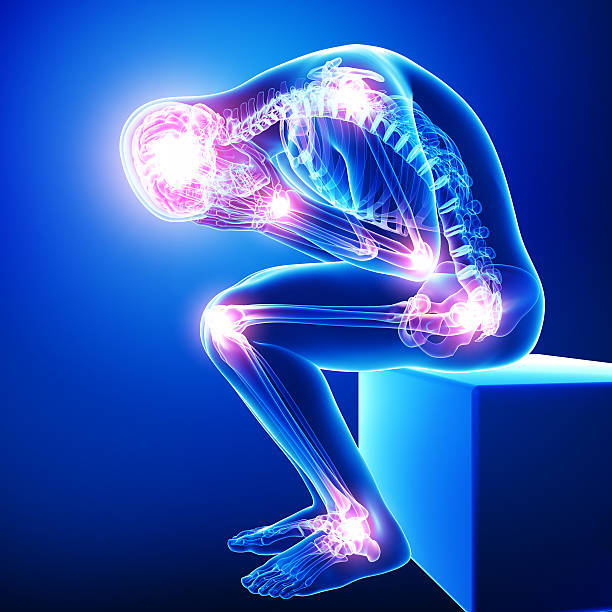
Potential Side Effects and Allergies from Pain Relief Creams
Understanding Side Effects
Common Side Effects Associated with Pain Relief Creams
Pain relief creams can sometimes cause side effects. These usually involve skin reactions like irritation, redness, or a burning feeling. Most people don’t have severe problems, but it’s good to know that these reactions can happen. Knowing what’s common helps you understand what to watch for when you try a new cream. 🚨
Symptoms Such as Skin Irritation, Redness, and Burning Sensations
When you use pain relief creams, you might notice your skin feels uncomfortable. Symptoms like irritation, redness, and burning are common. These usually happen right where you applied the cream and are signs that your skin might be sensitive to some of the ingredients in the product. 🔥
Factors Influencing the Likelihood of Experiencing Side Effects
The chance of having side effects from pain relief creams can depend on several things. How much cream you use, how often you use it, and your skin type can all play a part. Even the specific ingredients in the cream can make a difference in how your skin reacts. 📊
Differences in Side Effect Profiles Among Various Types of Creams
Different types of pain relief creams can cause different side effects. For example, creams with menthol might cool the skin but also cause more irritation for some people. Knowing which ingredients are in your cream can help you choose one that is less likely to cause discomfort. 🧴
Identifying Allergic Reactions
Explanation of What Constitutes an Allergic Reaction to Creams
An allergic reaction to a pain relief cream is your body’s defense system reacting to something in the cream it thinks is harmful. This can lead to symptoms like itching, swelling, or red bumps on the skin. It’s different from a side effect because it involves your immune system. 🚑
Common Symptoms of Allergic Reactions, Including Itching and Hives
If you’re allergic to a pain relief cream, you might get itchy skin or hives—those red, raised spots that can appear after you use the cream. These reactions can be uncomfortable and are a clear sign that your body isn’t happy with one of the ingredients. 🐝
Severe Allergic Reactions and the Need for Emergency Medical Attention
Sometimes, allergic reactions can be severe and need quick medical help. If you experience difficulty breathing, dizziness, or your face swells up after using a cream, it’s important to get to a doctor or hospital right away. These are signs of a serious reaction called anaphylaxis. 🚨
The Importance of Recognizing Early Signs of an Allergic Response
Knowing the early signs of an allergic reaction can help you act fast to avoid more serious problems. If you notice mild symptoms like a little rash or a few hives, stop using the cream and watch for more signs. Catching an allergy early can make dealing with it much easier. 👀

Conducting a Patch Test
Step-by-Step Guide on How to Perform a Patch Test
To make sure you’re safe to use a new pain relief cream, you can do a patch test. Apply a small amount of the cream to a discreet area of your skin, like the inside of your wrist. Leave it on for 24 hours without washing that spot to see how your skin reacts. 🕒
Importance of Choosing a Discreet Area for Testing
Choosing a discreet area for your patch test is important because if you do have a reaction, it won’t be too visible. The inside of your wrist or elbow is a good spot because it’s easy to cover up but also sensitive enough to show any allergic reaction. 🕵️♂️
What to Look for During and After the Test Period
During and after the patch test, look for any changes in the skin. Redness, bumps, swelling, or itching are all signs that you might be allergic to the cream. If your skin stays clear, it’s likely safe to use the product more broadly. 🧐
Interpreting Results and Deciding on the Safety of a Cream
If your patch test shows any signs of irritation or allergy, it’s best to avoid using the cream. If there are no reactions, it’s likely safe to use. Remember, a patch test isn’t foolproof, but it’s a good way to reduce the risk of a serious allergic reaction. ✔️
Immediate Actions for Adverse Reactions
First Steps to Take if a Negative Reaction Occurs
If you have a bad reaction to a pain relief cream, the first thing to do is wash the area with soap and water. This helps remove any remaining cream and can reduce the severity of the reaction. It’s the quickest way to start feeling better. 🚿
Importance of Washing the Area with Soap and Water
Washing the affected area thoroughly with soap and water is crucial. It helps get rid of the cream that’s causing the reaction and clears any irritants from your skin. This simple step can often alleviate the discomfort significantly. 🧼
When to Seek Medical Help
If washing the area doesn’t help, or if the reaction gets worse, it’s time to see a doctor. This is especially true if you experience severe symptoms like swelling, intense pain, or difficulty breathing. These symptoms require professional medical attention. 🏥
How to Document the Reaction for Future Reference
It’s helpful to take notes about your reaction and the cream you used. Write down what happened and how your skin looked. Taking photos can also be useful. This information can help healthcare professionals understand your reaction and avoid similar problems in the future. 📝
Consulting Healthcare Professionals
When and Why to Consult a Pharmacist or Doctor
If you’re unsure about using a pain relief cream or if you’ve had a reaction before, talk to a pharmacist or doctor. They can help you understand which ingredients might be risky for you and suggest safer alternatives. 🩺
The Role of Healthcare Professionals in Managing Side Effects and Allergies
Healthcare professionals can offer expert advice on how to deal with side effects and allergies from pain relief creams. They know how to treat reactions and can provide tips on how to use these products safely. Their guidance is invaluable when you’re trying to find a cream that won’t cause you problems. 👩⚕️👨⚕️
Getting Personalized Advice Based on Your Medical History
A pharmacist or doctor can give you personalized advice based on your health history. They’ll consider any past allergies or skin reactions you’ve had, which helps them recommend the safest options for you. It’s like having a guide who knows your health journey. 🗺️
The Value of Professional Guidance in Choosing Suitable Creams
Professional guidance is key when choosing a pain relief cream, especially if you have sensitive skin or allergies. Healthcare professionals can point you to products that are less likely to cause reactions and help you find relief safely. Their advice makes it easier to choose the right product. 🛡️
Preventive Measures to Avoid Side Effects
Tips for Selecting Creams with a Lower Risk of Side Effects
When choosing a pain relief cream, look for products with fewer ingredients and those labeled as hypoallergenic. These are usually formulated to be gentler on the skin and less likely to cause reactions. It’s a good way to reduce the risk of side effects. 🌱
Importance of Reading and Understanding Ingredient Labels
Reading ingredient labels on pain relief creams is important. It helps you spot any ingredients you know you’re allergic to. Understanding what’s in the cream can help you avoid products that might cause you trouble. 🔍
Considerations for Individuals with Sensitive Skin or Pre-existing Allergies
If you have sensitive skin or allergies, be extra careful with pain relief creams. Choose products specifically designed for sensitive skin, and always perform a patch test before using a new cream extensively. Taking these precautions can help prevent uncomfortable reactions. 🌼
Strategies for Gradually Introducing New Products to Your Regimen
When trying a new pain relief cream, start by using it in small amounts and only once every few days. This gradual approach lets your skin adjust to the new product and reduces the chance of a severe reaction. It’s like easing into a cold pool one step at a time. 🌊
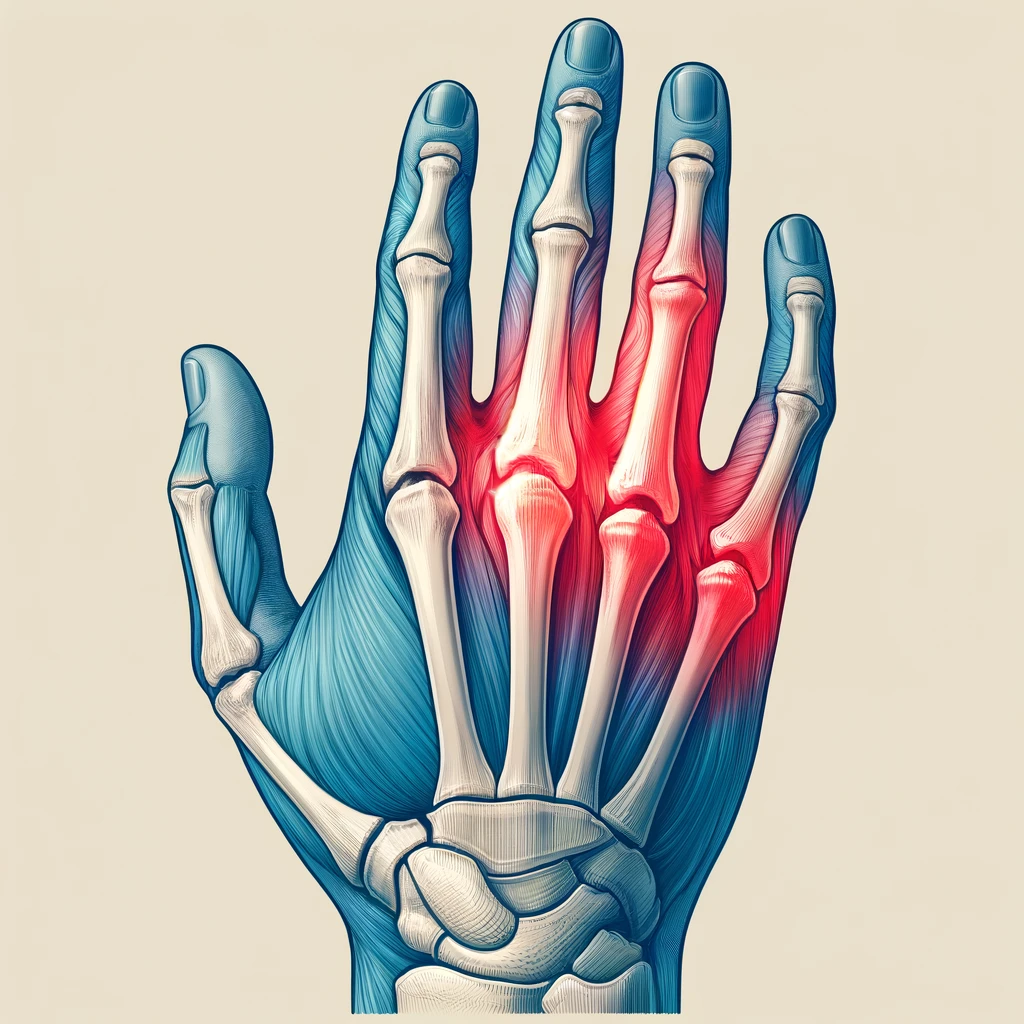
Long-Term Management and Monitoring
Importance of Ongoing Monitoring for Any Long-Term Side Effects
Keep an eye on how your skin reacts to a pain relief cream over time. Some side effects or allergies might not show up right away. Monitoring helps you catch any changes early, so you can stop using the cream if needed. 🔎
Adjusting Usage Patterns Based on Body Responses
If you notice that a cream causes mild irritation, try using it less often or in smaller amounts. Adjusting how you use it can help minimize side effects while still providing some pain relief. It’s all about finding the right balance for your body. ⚖️
Recognizing When to Discontinue a Product
If a cream consistently causes side effects or if the reactions are severe, it’s best to stop using it. There’s no reason to continue with a product that makes you uncomfortable or worsens your symptoms. Your comfort and safety are the most important. ❌
Keeping Track of Experiences and Reactions for Future Reference
Keep a record of how different pain relief creams affect you. Note any side effects or allergic reactions, along with how effective the cream is at relieving pain. This log can help you and your healthcare provider find the best options for your needs. 📔
Other Medications: Understanding the Risks with Pain Relief Creams
Introduction to Medication Interactions
Overview of How Topical Pain Relievers Can Interact with Oral Medications
Topical pain relievers, like creams you rub on your skin, can sometimes interact with medicines you take by mouth. Even though you apply them on your skin, some of the medicine can get into your bloodstream. This means they might affect how your other medications work. It’s important to think about all your medicines when you use these creams. 💊🤝
Explanation of Skin Absorption Properties
When you use a pain relief cream, your skin absorbs the medication just like it absorbs lotion. This means that not only does the medicine affect the area where you apply it, but it can also get into your blood and travel to other parts of your body. Understanding this can help you see why these creams might interact with other medications you’re taking. 🧴➡️🩸
Importance of Considering All Medications When Using Topical Treatments
It’s crucial to consider all the medications you’re taking when you use a topical pain reliever. Some ingredients in the cream can affect or be affected by other medicines, potentially leading to unwanted side effects or reduced effectiveness. Always keep a list of all your medications handy when discussing treatments with your doctor. 📝👩⚕️
Basic Concepts of Drug Interactions and Their Potential Consequences
Drug interactions happen when one medication affects how another medication works. These interactions can change how your medicines work and may cause unexpected side effects. Knowing the basics of how these interactions can occur helps you stay safe while using multiple medications. 🔄🚫
Specific Interactions with NSAIDs
Role of NSAIDs in Pain Relief Creams, Such as Diclofenac
NSAIDs (non-steroidal anti-inflammatory drugs) like diclofenac are common in pain relief creams because they reduce inflammation and pain. When you apply these creams, the NSAID works right at the spot of pain, but it can also enter your bloodstream and interact with other medications. 🎯💊
Potential Risks of Combining Topical NSAIDs with Oral NSAIDs or Blood Thinners
Using a topical NSAID while also taking an oral NSAID or a blood thinner can increase the risk of side effects, like stomach bleeding or increased bruising. It’s important to be careful with this combination and talk to your healthcare provider about it. 💉🚨
Examples of Adverse Effects from NSAID Interactions
Adverse effects from mixing topical and oral NSAIDs can include stomach ulcers, kidney problems, or heart issues. These serious side effects show why it’s important to manage how you use NSAIDs carefully, especially if you’re also taking other medications like blood thinners. 🚑🏥
Guidelines for Safe Use of NSAID-Containing Creams
To safely use creams that contain NSAIDs, always follow the directions on the label and talk to your doctor, especially if you’re using other NSAIDs or medications. They might recommend adjusting your dose or monitoring your health more closely while you use the cream. 📋👨⚕️
Consulting Healthcare Providers
Importance of Discussing Topical Pain Relievers with a Healthcare Provider
Always talk to a healthcare provider before starting a new topical pain reliever, especially if you take other medications. They can help you understand any potential risks and make sure all your treatments work well together. 👩⚕️💬
How Providers Can Help Identify Potential Drug Interactions
Healthcare providers use their knowledge and resources to identify possible drug interactions. They can review all the medications you’re taking and tell you if adding a pain relief cream could cause any issues. This helps keep you safe and ensures your medications are effective. 🏥🔍
Role of Pharmacists in Providing Drug Interaction Advice
Pharmacists are great resources for information about drug interactions. They can explain how different medications might interact with each other and with pain relief creams. Always feel free to ask your pharmacist questions about your medications. 💊👨🔬
Benefits of Regular Medication Reviews When Starting New Treatments
Having regular medication reviews is especially important when you start using a new pain relief cream. Your doctor or pharmacist can check that all your medicines are safe to use together, reducing the risk of interactions and side effects. 📅👩⚕️
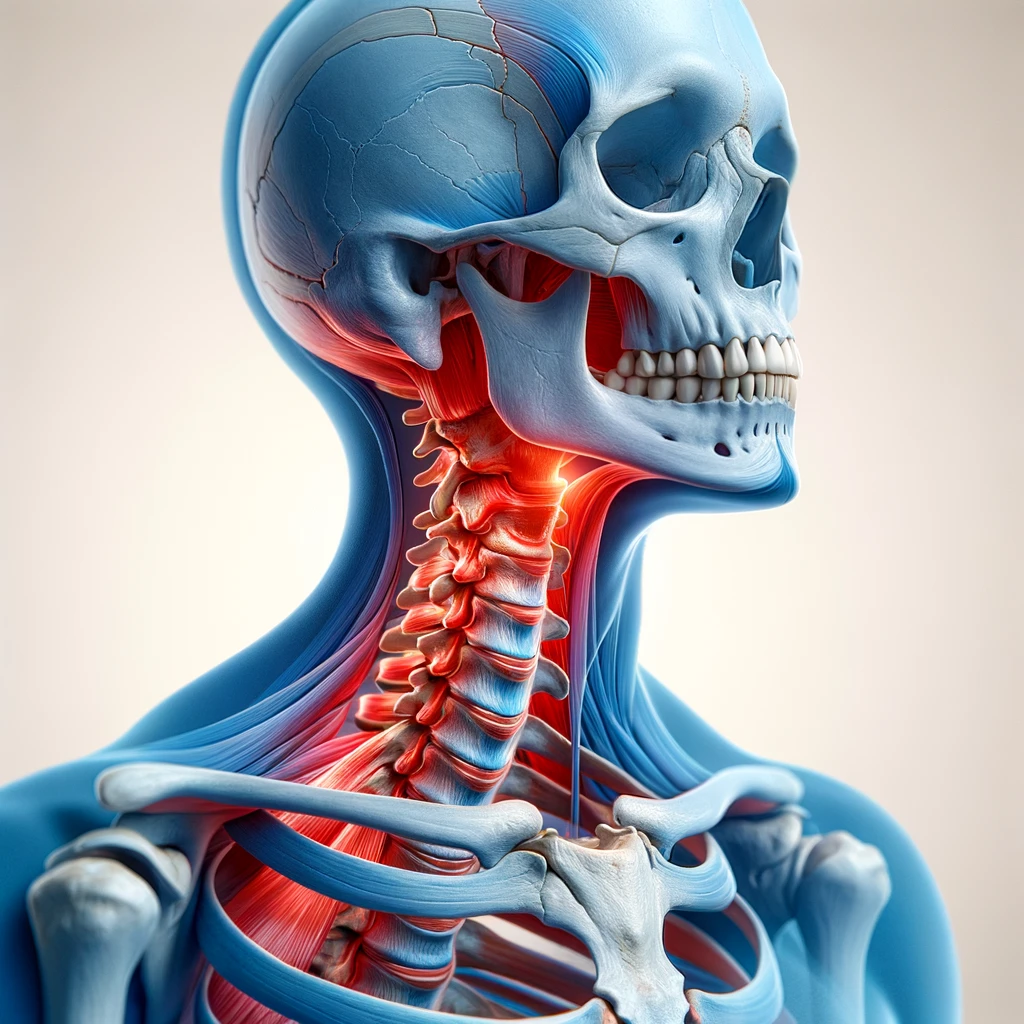
Risks with Common Medications
Interactions with Blood Pressure Medications
If you’re using blood pressure medication, adding a topical pain reliever might affect how well your blood pressure medicine works. Sometimes, these interactions can make your blood pressure too high or too low, which can be dangerous. 🩺💔
Effects on the Effectiveness of Heart Condition Drugs
Topical pain relievers can also interfere with medications for heart conditions. They might make these drugs less effective, which can put your heart health at risk. It’s crucial to manage these medications carefully and monitor your heart condition regularly. ❤️⚠️
Potential Risks When Combining Pain Creams with Diabetes Medications
Using pain relief creams can also affect how your diabetes medications work. This can lead to higher or lower blood sugar levels than expected. Always monitor your blood sugar closely if you’re using both types of treatment. 🩸🍰
Considerations for Those Taking Mental Health Medications
For those on mental health medications, using topical pain relievers might change how these medications affect you. This could influence your mood or the effectiveness of your mental health treatment. Always discuss these considerations with your healthcare provider. 🧠💊
Preventive Strategies for Managing Interactions
Tips for Tracking All Medications and Supplements Taken
Keep a detailed list of all the medications and supplements you take. This list should include everything, even over-the-counter drugs and herbal remedies. This helps you and your healthcare providers keep track of potential interactions. 📜📌
Importance of Reading and Understanding All Product Labels
Always read and understand the labels on all your medications, including pain relief creams. Knowing what each medication contains helps you avoid ingredients that could interact with other treatments you’re using. 🔍🏷️
Strategies for Scheduling Topical and Oral Medication Applications
Plan carefully when you apply topical pain relievers and when you take your oral medications. Spacing them out during the day can sometimes help avoid interactions. Discuss the best schedule with your healthcare provider. 📅⏳
How to Monitor for Signs of Negative Interactions
Keep an eye out for any unusual symptoms after starting a new medication or pain relief cream. Signs like unexpected dizziness, a rash, or a change in how you feel can indicate an interaction. If you notice anything strange, contact your healthcare provider right away. 🚩👀
Subtle Interactions and Their Implications
Explanation of Less Obvious Interactions and Their Potential Impacts
Some drug interactions aren’t immediately obvious. They might slowly affect the effectiveness of your medications or cause mild side effects that you don’t notice right away. Being aware of these subtle changes is important for maintaining your health. 🕵️♂️💬
Examples of Subtle Changes in Medication Effectiveness or Side Effects
Subtle interactions might make your pain relief less effective over time, or they could cause side effects like mild nausea or headaches. These changes can be easy to overlook but can affect your overall treatment plan. 🧐🤕
Importance of Patient Awareness and Self-Monitoring
Being aware of how your medications and creams affect you is crucial. Keep track of any new symptoms or changes in how you feel. Self-monitoring helps you recognize potential problems early and discuss them with your doctor. 📝👀
Reporting Unexpected Changes to Healthcare Providers
If you notice any unexpected changes in how you feel or how your medications work, report them to your healthcare provider. Even small changes can be important clues that your treatment plan needs adjusting. 🗣️👨⚕️
Educational Resources and Tools
Resources for Learning More About Drug Interactions
There are many resources available to help you learn about drug interactions. Websites, books, and patient information leaflets can provide valuable information. Your healthcare provider can also recommend reliable sources. 📚💻
Apps and Tools for Tracking Medications and Potential Interactions
Use apps and digital tools to track your medications and any potential interactions. These tools can alert you to risks based on the medications you enter, making it easier to manage your health safely. 📱🔔
Organizations and Websites That Provide Detailed Drug Interaction Information
Organizations like the FDA and various health websites offer detailed information about drug interactions. These resources can help you understand the risks and how to manage your medications more effectively. 🌐🔍
How to Stay Updated on New Findings in Medication Interactions
Staying updated on new research and information about medication interactions is important. Follow medical news, subscribe to health newsletters, and talk to your healthcare provider about any new findings that might affect you. 📈📰

Finding the Right Cream for Your Pain Relief Needs
Understanding Your Pain
Identifying the Type of Pain (Dull Ache, Sharp Pain, Nagging Soreness)
Understanding your pain is the first step in finding the right cream. Whether it’s a dull ache, a sharp stabbing pain, or just a constant nagging soreness, each type of pain can suggest different underlying causes and treatments. Recognizing and describing your pain accurately helps in choosing the most effective relief method. 🔍🤕
Common Causes of Different Pain Types
Different kinds of pain often come from various causes. A dull ache might be from muscle strain or arthritis, while a sharp pain could result from nerve damage or an injury. Knowing what typically causes your type of pain can guide you to the most appropriate treatment options. 📖💡
How Pain Type Affects Treatment Choice
The type of pain you experience directly influences the choice of treatment. For instance, anti-inflammatory creams are often better for throbbing pain caused by inflammation, whereas creams with heating or cooling effects might be more suitable for sore muscles or to soothe nerve pain. 🚦🧴
Importance of Accurately Describing Your Pain to Healthcare Providers
Describing your pain accurately to healthcare providers is crucial. The more specific you are about where it hurts, what it feels like, and when it happens, the better your doctor can recommend the right pain relief cream or another treatment method. Clear communication ensures you get the best care. 🗣️👩⚕️
Types of Pain Relief Creams
Over-the-Counter (OTC) Creams
OTC pain relief creams are widely available and can treat a variety of minor aches and pains. These creams often contain ingredients like menthol or camphor, which provide temporary relief by cooling or warming the skin. They’re a convenient first choice for mild pain. 🛒🧴
Prescription-Strength Creams
For more severe or persistent pain, prescription-strength creams may be necessary. These creams contain higher concentrations of active ingredients or substances not available over the counter, providing more potent pain relief under a doctor’s supervision. 💊📜
Herbal and Natural Ingredient Creams
Herbal and natural ingredient creams use substances like arnica or aloe vera and are favored by those looking for more organic or gentle options. These creams are popular for their minimal side effects and are often used for mild to moderate pain. 🌿🧴
Specialized Creams for Specific Pain Areas (e.g., Joint Pain, Muscle Soreness)
Some creams are specially formulated for specific body parts or types of pain, such as joint pain or muscle soreness. These targeted creams can contain ingredients that penetrate deeper to provide relief exactly where it’s needed most. 🎯🏋️♂️
Active Ingredients in Pain Relief Creams
Common OTC Active Ingredients (e.g., Menthol, Camphor)
Common OTC ingredients like menthol and camphor are used for their cooling and warming sensations, which help distract from the pain by stimulating nerves in the affected area. These ingredients are effective for a wide range of conditions, from muscle aches to joint stiffness. ❄️🔥
Prescription Ingredients and Their Benefits
Prescription pain relief creams might contain more specialized or stronger active ingredients, such as higher doses of NSAIDs or capsaicin, which provide significant relief for more intense or chronic pain conditions. These are formulated to act deeply at the pain source. 💪💊
Natural Ingredients (e.g., Arnica, Aloe Vera)
Natural ingredients like arnica are used for their anti-inflammatory properties, while aloe vera is prized for its soothing and healing abilities. These natural options are often chosen by those sensitive to harsher chemicals or who prefer a more holistic approach to pain management. 🌼🌱
Potential Side Effects and Allergies to Watch For
While pain relief creams are generally safe, they can sometimes cause side effects such as skin irritation, redness, or allergic reactions. It’s important to be aware of these potential issues, especially if you have sensitive skin or allergies. Always test a new cream on a small skin area first. 🚨🔬
Choosing the Right Consistency and Application Method
Creams vs. Ointments: Understanding the Difference
Understanding the difference between creams and ointments is important for choosing the right product. Creams are generally lighter and absorb quickly, making them suitable for daytime use. Ointments are thicker and greasier, which might be better for deep, overnight healing. 🌞🌜
Non-Greasy, Fast-Absorbing Formulas for Active Lifestyles
For those with active lifestyles, non-greasy, fast-absorbing formulas are ideal. These allow you to apply the cream and move
Conclusion: Making an Informed Choice.
By now, you’ve got a pretty solid understanding of what goes into pain relief creams and the role each ingredient plays. It’s not just about finding immediate relief; it’s also about knowing what you’re applying to your body and making sure it’s the right fit for you.
Reading labels might seem tedious, but it’s a small step that packs a big punch when it comes to managing your health. Whether you’re dealing with acute muscle strain or chronic joint pain, the ingredients in your cream can make all the difference in how you feel.
Don’t hesitate to reach out to a healthcare professional if you’re unsure about a particular product or ingredient. They can provide personalized advice based on your medical history and specific needs. Trust me, it’s worth the peace of mind.
Remember, your journey to pain relief doesn’t have to be a solo mission. There’s a wealth of information out there and professionals ready to guide you. Choose something that resonates with you and gives you confidence in your choice.
So, take what you’ve learned today, and use it to empower your decisions in the pain relief aisle. And if you ever need a refresher, feel free to revisit this guide. I’m here to help you make sense of it all – because you deserve to feel good every day.
Our YouTube channel Gym Rat Tips!
Check Out Our I Fund women Campaign!
Check out Our Social Media Account!
[Disclaimer: Consult a healthcare professional before starting any new pain soothing regimen. “No Youchie” is not intended to diagnose, treat, cure, or prevent any disease illness or injury.]
Pain Relief Solution Is No Youchie!

The Science Behind Pain Relief Creams
I’m going to kick things off by delving into the world of pain relief creams, but first, let’s understand the adversary we often grapple with: pain itself. Pain isn’t just an uncomfortable sensation; it’s a complex warning system. It alerts us to potential harm and kickstarts our body’s self-preservation tactics. But what happens when this helpful alert turns into a relentless alarm? That’s where pain relief creams step into the spotlight.
The popularity of these topical treatments isn’t just a matter of convenience. People are drawn to their ease of use and the promise of localized relief without systemic side effects. A pain relief cream might contain a variety of active ingredients, each with a specific role to play in the multimodal approach to pain management. These creams are designed to reduce inflammation, alleviate discomfort, or even distract the brain from pain signals.
Talking about active ingredients, that’s going to include options like NSAIDs, capsaicin, menthol, and lidocaine. Each of these components works differently to help lessen your discomfort. This isn’t just about slapping on any cream you find at the drugstore; it’s also about understanding what’s in it and how it works, which is exactly what we’re going to explore in the next section. I’m here to help you peek under the lid and decode the science behind those soothing creams.

The Science of Soothing: Active Ingredients Explored
I’m going to break down the wall of mystery surrounding the active ingredients found in pain relief creams. This isn’t just about a list of substances; it’s about understanding what’s behind that cooling sensation or the heat you feel moments after applying the cream.
You’re going to find out about the common go-tos like menthol, which creates a cooling effect that distracts your body from the pain. Capsaicin, derived from chili peppers, brings heat and blocks pain signals. There are also anti-inflammatories like salicylates that reduce inflammation directly in the pained muscles or joints.
In my opinion, it’s crucial to understand how these ingredients interact with our bodies. For example, menthol works by triggering cold-sensitive receptors in the skin, which sends a ‘cooling’ signal that can override pain signals. Capsaicin, on the other hand, activates and then depletes substance P, a key neurotransmitter in conveying pain sensations to the brain.
Don’t worry too much about side effects – most topical creams are safe when used as directed. However, some can cause reactions, especially with prolonged or excessive use. Always check the label for the maximum recommended dosage and instructions.
This leads us to the lingering question: how effective are these active ingredients? That’s what you’re going to delve into next, where we’ll explore the scientific backing and real-world experiences that reveal the efficacy of pain relief creams.
How Effective Are Pain Relief Creams?
I’m going to walk you through what science says about the effectiveness of pain relief creams. It’s not just about marketing hype; there’s research that backs up the claims.
Clinical trials are the gold standard when we talk about efficacy. Several studies have supported that pain relief creams can indeed help manage symptoms like muscle soreness and arthritis pain. I’m here to help you understand those findings.
Next, let’s consider how these creams stack up against other forms of pain relief. It turns out, for some conditions, they’re as effective as oral medications, without some of the systemic side effects. That’s a big win for those who prefer a targeted approach.
Don’t just take my word for it; users often report that pain relief creams provide them with a much-needed respite from chronic pain. These anecdotes, alongside clinical evidence, add layers to our understanding of these products.
But here’s something to remember: your first attempt with a pain relief cream might not be a home run. It’s important to note that individual responses to pain relief creams can vary. Ingredients, concentration, and even the base formulation play a part in how well a cream works for you.
That said, let’s transition to how you can maximize the potential benefits of your pain relief cream. The application is key, and there are ways to get the most out of each tube.

Application Techniques for Maximum Benefit
I’m going to walk you through the best practices for applying pain relief creams so you can get the most out of these topical agents. It’s not just about slathering it on; there’s an art to it. You’ll want to ensure that the area is clean before application to avoid trapping any bacteria under the cream. Gently massaging the cream into the skin in a circular motion helps to improve circulation and may increase the effectiveness of the product.
Some areas of the body, like joints and muscles that are prone to strain, are where pain relief creams show their true potential. If you’re dealing with elbow tendinitis or a sore lower back, these creams can be particularly beneficial. However, there are places you should avoid, like broken skin, faces, and near the eyes, to prevent irritation.
Enhancing absorption is key. After applying the cream, you might want to cover the area with a cloth or bandage; this can keep the cream in place and enhance penetration. Just don’t wrap it too tight—that could cause other issues. And remember, you can always adjust your approach down the road based on what works for you.
Integrating Pain Relief Creams into Your Wellness Routine
It’s not just about slathering on a cream when discomfort strikes; it’s about incorporating topical treatments into a thoughtful wellness plan. This is where the real potential for relief lies. Your strategy will depend on the nature and cause of your pain, but using creams can be a simple and effective part of your daily routine.
In my opinion, timing is critical. Knowing when to apply pain relief creams in sync with other pain management strategies can make all the difference. For instance, using a cream right after a warm shower can improve pain relief as your pores are open and more receptive.
I’m here to help you with holistic strategies that can complement your use of topical pain treatments. Think about including low-impact exercises, like yoga or swimming, which help with circulation and flexibility. Don’t forget about the power of a good night’s rest or the role a balanced diet plays in overall health.
Choose something that resonates with you, something realistic that you can stick with. If you’re dealing with chronic pain, you might find that certain mindful practices, such as meditation or deep-breathing exercises, can significantly change how you perceive and manage your pain.
Remember, you can always adjust your approach down the road. It’s vital to listen to your body and be flexible as your needs change. But the fundamental goal remains: enhancing the quality of your life while managing discomfort with as much grace and ease as possible.
Now, let’s talk about what comes next. Navigating through the various pain relief options available on the market can be overwhelming. You’re going to find out more about how to choose the right pain relief cream that best fits your individual needs in the next section.

Choosing the Right Pain Relief Cream for You
I’m going to level with you: selecting the right pain relief cream can be a bit like walking through a maze. Now, with all the options out there, you might wonder where to start. I’m here to help you with that.
If you want to find a pain relief cream that works for you, consider the types of pain you’re dealing with. Is it muscular, joint, or nerve pain? Check the labels and select a product geared towards your specific pain type.
In my opinion, it’s vital to think about the active ingredients. Are you looking for something with a cooling effect? Then look for menthol or camphor. Need something with anti-inflammatory properties? Then diclofenac or ibuprofen might be in your lane.
You can always adjust your approach down the road, but start with recommendations from healthcare providers. They can point you towards prescription options if over-the-counter creams aren’t cutting it, ensuring a stronger, possibly more targeted solution.
Choose something that resonates with you. If you’re into natural remedies, there are creams with ingredients like arnica or turmeric. Meanwhile, if you have sensitive skin, opt for a formulation designed to be gentle and hypoallergenic.
Don’t worry too much about getting it perfect on the first try. Your body will respond to some products better than others, and it’s okay to switch things up if necessary. Just remember that above all, your comfort and safety are paramount.
I really hope that you find relief with the right pain relief cream. Remember, while these creams can offer solace, always consider the bigger picture of your health and consult professionals when needed. Your journey to a pain-free life is important, and you don’t have to walk it alone.
Please Visit me on KickStarter!
You can Also visit me at IndieGoGo!
[Disclaimer: Consult a healthcare professional before starting any new pain soothing regimen. “No Youchie” is not intended to diagnose, treat, cure, or prevent any disease illness or injury.]
Click here For Our Other Blog Post lists For Your Reading Pleasure!

Understanding The Role Of Menthol In Pain Relief Creams
I’m going to guide you through the world of menthol, particularly its role in pain relief creams. Menthol is an organic compound, famously known for its refreshing scent and cooling sensation. It’s widespread in nature, predominantly found in the oils of mint plants, such as peppermint and spearmint.
This isn’t just about the pleasurable cool feel of menthol; our ancestors used it long before it found its way into our modern medicine cabinets. Over history, menthol has been utilized in traditional remedies across various cultures due to its soothing properties.
You’re going to find out about how this age-old remedy made its transition to being a staple in today’s topical analgesics. These are products that alleviate aches and pains right at the source. Now, menthol is a key player in many over-the-counter pain relief creams, gels, and ointments, valued for both its effectiveness and natural origin.

Scientific Mechanisms: How Menthol Alleviates Pain
In this part of the conversation, we’re getting into the nitty-gritty of how menthol works its magic on pain. It’s not just an old wives’ tale that menthol soothes your aches; there’s bona fide science behind it. So, let’s break down these mechanisms.
Menthol doesn’t work in a vacuum; it teams up with your body’s nervous system. When menthol is applied to the skin, it stimulates the thermoreceptors, which are essentially cold-sensitive nerve endings. Think of it as a gentle knock on the door that tells your brain, ‘Hey, something’s cooling down here.’ This signal can distract your brain from pain by essentially hijacking the attention, offering you a moment of ‘Ahh, that’s better.’
However, it’s not all about distraction. Menthol acts as a counterirritant. That means it creates a new, milder irritation that masks the original pain. Your brain gets busy dealing with the fresh (but non-harmful) sensation caused by the menthol, giving you a break from the discomfort you were previously feeling.
Next up, we’re moving into whether all this translates to effectiveness in the real world. Is menthol really the hero we paint it to be in pain relief? Do studies support its use? In the upcoming section, I’m going to lay out the research-backed evidence that gives credence to the role of menthol in managing pain. Hang tight, as we dive into evaluating the actual results of menthol-based creams.
Evaluating the Effectiveness of Menthol-Based Creams
When it comes to menthol-based creams, you’re going to find out about their real-world impact on pain relief through scientific studies and comparative analyses with other pain relief agents. Many people ask if menthol is actually effective, or if it’s just a temporary buzz of cold sensation that distracts from the pain.
Research tells us that the effectiveness of menthol isn’t just anecdotal. Studies have consistently shown that menthol, when applied topically, can significantly alleviate minor muscular and joint pain. This isn’t just about a short-lived cooling effect; it’s also about the physiological changes that result in pain relief.
To give you an idea, one report in the Journal of Clinical Rheumatology found that participants using menthol reported a marked decrease in perceived muscle strain and discomfort. Further, when menthol is stacked against other over-the-counter options like non-steroidal anti-inflammatory drugs (NSAIDs), the results are often comparable, particularly for acute pain scenarios such as strains or sprains.
But what do real users say? Beyond the labs, testimonials reveal a high degree of satisfaction with the pain relief afforded by menthol creams. Many users point out the rapid onset of relief, which can be particularly reassuring in moments of sudden ache or pain. Choose something that resonates with you; if a cooling sensation plus pain relief sound appealing, menthol could be your go-to.
That being said, this isn’t a cure-all. While menthol-based creams can be very effective, they’re part of a pain management toolkit, which may include other forms of therapy. And that’s going to include understanding how to apply these creams properly, which leads us into our next section.
Applying Menthol Creams: Best Practices and Safety

When using menthol creams, it’s important to follow a few guidelines to ensure you’re getting the most out of the product safely.
Start by reading the label and following the manufacturer’s instructions. Over-the-counter should include details on how often you can apply the cream and how much to use.
If you’re new to menthol creams, do a patch test first. Apply a small amount to a discreet area of skin, wait a bit, and keep an eye out for any irritation.
Regarding concentration, less can be more. Start with creams that have a lower percentage of menthol and see how your body reacts. If you need more intense relief, you can try a stronger formulation, but always incrementally.
Avoid using menthol creams on broken or irritated skin, or with heat sources like a heating pad, as this can increase the risk of burns.
Be aware of possible side effects like redness, irritation, or an allergic reaction and consult your healthcare provider if you experience these.
A quick word on storing your cream: Keep it away from extreme temperatures and out of direct sunlight to maintain its efficacy.
After applying, wash your hands unless you’re treating them. Menthol can cause a burning sensation if it gets into your eyes or on other sensitive areas.
Beyond Pain Relief: Additional Benefits and Uses of Menthol

You’re going to find out about more than just pain alleviation when you pry into the world of menthol. It’s not only your muscles that get a break; the cooling sensation of menthol creams can also play a significant part in promoting relaxation and reducing stress. Imagine applying a dab after a long day and feeling a wave of calm spread through your body—that’s menthol at work.
In my opinion, menthol doesn’t get enough credit. There’s a lot of opportunity in exploring its other medical applications. For instance, menthol has been used to help ease congestion in the chest and throat. It’s an ingredient in vapor rubs and lozenges for a good reason.
But that’s not the end of the story. Menthol also serves therapeutic purposes beyond pain and cold relief. Did you know that it’s found in certain cosmetics and perfumery products? Its refreshing properties make it a fine choice for personal care items.
Choose something that resonates with you when it comes to incorporating menthol into your health and wellness routine. Whether it’s a cream, a patch, or aromatherapy oils, the versatility of menthol means you can tailor its soothing touch to your needs.
So my question to you today is, how will you embrace the multifaceted nature of menthol? As you can always adjust your approach down the road, don’t worry too much about perfecting your choice on the first go. The journey towards well-being is continuous, and menthol can very well be a part of your personal remedy repertoire.
Please Visit me on KickStarter!
You can Also visit me at IndieGoGo!
[Disclaimer: Consult a healthcare professional before starting any new pain soothing regimen. “No Youchie” is not intended to diagnose, treat, cure, or prevent any disease illness or injury.]
Click here For Our Other Blog Post lists For Your Reading Pleasure!

NO OUCHIE Pain Relief Solution = No Youchie
No ouchie? In a world where everyday bumps, bruises, and muscle soreness can bring on the ouchies, having a reliable solution is key. That’s where No Youchie steps in to make the decision easy. In this blog post, we’ll explore why choosing No Youchie means saying goodbye to those pesky ouchies and welcoming a world of natural, soothing relief. Let’s dive into the reasons why we are the smart choice for anyone looking for effective and comfortable pain relief, with “No Ouchie” as the guiding keyword.

No Ouchie, All Comfort:
Let’s kick things off with the main attraction – No Youchie is all about banishing the ouchies. Whether it’s a sore muscle from a workout or a bump from a clumsy moment, No Youchie is here to turn those discomforts into a thing of the past. Say goodbye to the no ouchies, and say hello to a more comfortable you.
Natural Goodness in Every Drop:
No Youchie is a unique blend of natural ingredients, each contributing its special touch to the recipe for relief. From the cool breeze of menthol to the soothing powers of arnica, it’s a symphony of natural goodness working together to provide effective relief without any harsh chemicals.

Easy Application, Quick Relief:
No Youchie believes in keeping things simple. Applying it to the achy spot is as easy as 1-2-3, and you can expect quick relief without the fuss. It’s pain relief made easy for those who prefer simplicity in their routines.
Versatility pain relief solution for Every Situation:
No matter the source of your ouchies – whether it’s a sports-related strain, a long day on your feet, or a little accident – No Youchie is your versatile companion. It’s a go-to solution for various situations, making it the reliable choice for all kinds of discomfort.
No Ouchie Discrimination – For Everyone, Everywhere:
No Youchie doesn’t play favorites. It’s a product for all ages and all walks of life. Whether you’re a teenager dealing with sports injuries or an adult facing the wear and tear of daily life, No Youchie is there to make sure ouchies don’t discriminate.

All Comfort, No Youchie:
No comprimise we do not compromise on quality or safety. It’s a product designed with transparency in mind. No hidden surprises or harsh chemicals – just a commitment to providing relief in the most effective and natural way possible.
Positive Experiences, Real Relief:
The buzz around No Youchie isn’t just talk. It’s backed by real experiences of individuals who have bid farewell to their ouchies with the help of No Youchie. Real people, real relief – a testament to the product’s effectiveness.

No Ouchie, Yes to Natural Aroma:
Imagine a pain relief solution that not only works wonders but also smells delightful. No ouchie adds a pleasant aroma to the mix, thanks to its blend of essential oils. It’s a little extra touch that makes the pain relief experience more enjoyable.
Conclusion:
Choosing our product isn’t just a smart move; it’s a natural one. With a focus on bidding adieu to ouchies, a commitment to natural goodness, and a versatile approach to pain relief, No Youchie is your ticket to a world of comfort. Say goodbye to discomfort, and say hello to the relief you deserve. No Ouchie, All Relief – that’s the No Youchie promise! Make the smart choice and embrace a more comfortable you with No Youchie.
Please Visit me on KickStarter!
You can Also visit me at IndieGoGo!
[Disclaimer: Consult a healthcare professional before starting any new pain soothing regimen. “No Youchie” is not intended to diagnose, treat, cure, or prevent any disease illness or injury.]
Click here For Our Other Blog Posts For Your Reading Pleasure!
Journey Following No Youchie A Secret Weapon Against Pain
Journey Following No Youchie.. A Ray of Hope in Pain Relief!
Introduction:
Come on a special journey with No Youchie, a cream that wants to help people who are dealing with pain. Our story is about facing big challenges with two shoulder muscles that were hurt. We tried to find ways to feel better, but regular solutions didn’t work, and the idea of surgery was scary. Then, we found something new – “No Youchie.” Even though it’s still being studied and made better, this cream has already shown that it might be really good at helping with pain.
As we talk about our journey, we want you to understand the tough times we had with our shoulder muscles, which is something a lot of people go through. Regular ways to feel better seemed far away, making us think about surgery as the only choice. But then, we found “No Youchie.” Even though it’s still being worked on, this special cream has already done some really good things, making us feel hopeful for a new way to deal with pain.
We want to share our story with you and have you join us on this adventure with No Youchie. Our story is all about personal experiences and trying to find a way to feel better from really bad pain. Our hope is that this cream, “No Youchie,” not only helps with pain but also inspires others going through tough times with their pain.

Discover the special qualities that make No Youchie different from other creams. It’s not just about making you feel better; it’s also about how much care goes into making it. This cream has a mix of natural ingredients, like arnica and menthol, chosen because they can help with pain. Unlike regular pain medicine, these ingredients aim to give relief without causing problems. The people who make No Youchie pay close attention to every detail, showing how much they care about making a helpful cream.
The Power of Natural Ingredients:
Each ingredient in No Youchie brings something unique to the table. Arnica is known for helping with pain, while menthol gives a cool feeling. This combination is chosen carefully to work well without causing any harm. The team making the cream thinks a lot about what goes into it, and that’s why it’s special.
Commitment to Your Well-Being:
The people working on No Youchie care about you feeling better without any bad effects. They work hard to make sure every part of the cream is just right. Their commitment shows that they want to provide something that helps you, and they’re not just making any regular cream. No Youchie is made with care, and that’s what makes it stand out.
Journey Following No Youchie and it’s Impact and Promise:
Feel the positive changes that No Youchie brings to your daily life. When you put this cream on where it hurts, you’ll feel better and more comfortable. As No Youchie keeps getting better, it brings hope for a new way to think about feeling less pain. Many times, people try things that promise quick results, but No Youchie is different. It’s like a light in the dark for those dealing with pain every day, offering the chance for a better and cozier future. Come along with us on this journey to have less pain and more opportunities. No Youchie is not just a cream; it could change how we deal with pain. Watch how it grows and imagine a life where you don’t have to deal with constant discomfort all the time.
Discover a Better Tomorrow With This Secret Weapon Against Pain:
When you use No Youchie, it’s like finding a friend that makes your days better. Put it where it hurts, and you’ll start feeling relief. This cream is still getting even better, and it might change how we think about stopping pain. Some things promise a quick fix, but No Youchie is special. It’s like a light in the dark for people who always have pain, offering the chance for a better and cozier future. Join us on this journey to have less pain and more chances to enjoy life. No Youchie is not just a cream; it could change how we deal with pain. Watch how it grows and imagine a life where you don’t have to deal with constant discomfort all the time.
Hope for a Cozy Future:
Using No Youchie is like having a secret weapon against pain. Put it on where it hurts, and you’ll feel the difference. This cream is still getting even better, and it might change how we think about stopping pain. Some things promise a quick fix, but No Youchie is special. It’s like a light in the dark for people who always have pain, offering the chance for a better and cozier future. Join us on this journey to have less pain and more chances to enjoy life. No Youchie is not just a cream; it could change how we deal with pain. Watch how it grows and imagine a life where you don’t have to deal with constant discomfort all the time.

Please Visit me on KickStarter!
You can Also visit me at IndieGoGo!
[Disclaimer: Consult a healthcare professional before starting any new pain soothing regimen. “No Youchie” is not intended to diagnose, treat, cure, or prevent any disease illness or injury.]
Click here For Our Other Blog Post lists For Your Reading Pleasure

